NBER WORKING PAPER SERIES
CROSS-SUBSIDIZATION OF BAD CREDIT IN A LENDING CRISIS
Nikolaos Artavanis
Brian Jonghwan Lee
Stavros Panageas
Margarita Tsoutsoura
Working Paper 29850
http://www.nber.org/papers/w29850
NATIONAL BUREAU OF ECONOMIC RESEARCH
1050 Massachusetts Avenue
Cambridge, MA 02138
March 2022
We have benefited from comments by Claudia Robles-Garcia, Sascha Steffen (discussant), and
participants at AFA, AEA, Frankfurt School, Columbia Business School, RCEA, and ECB.
Tsoutsoura gratefully acknowledges financial support from the Fama-Miller Center for Research
in Finance at Chicago Booth. The views expressed herein are those of the authors and do not
necessarily reflect the views of the National Bureau of Economic Research.
NBER working papers are circulated for discussion and comment purposes. They have not been
peer-reviewed or been subject to the review by the NBER Board of Directors that accompanies
official NBER publications.
© 2022 by Nikolaos Artavanis, Brian Jonghwan Lee, Stavros Panageas, and Margarita
Tsoutsoura. All rights reserved. Short sections of text, not to exceed two paragraphs, may be
quoted without explicit permission provided that full credit, including © notice, is given to the
source.

Cross-subsidization of Bad Credit in a Lending Crisis
Nikolaos Artavanis, Brian Jonghwan Lee, Stavros Panageas, and Margarita Tsoutsoura
NBER Working Paper No. 29850
March 2022
JEL No. E43,E44,G01,G21,G3
ABSTRACT
We study the corporate-loan pricing decisions of a major Greek bank during the Greek financial
crisis. A unique aspect of our dataset is that we observe both the interest rate and the “breakeven
rate” of each loan, as computed by the bank’s own loan-pricing department (in effect, the loan’s
marginal cost). We document that low-breakeven-rate (safer) borrowers are charged significant
markups, whereas high-breakeven-rate (riskier) borrowers are charged small and sometimes even
negative markups. We rationalize this de-facto cross-subsidization of riskier borrowers by safer
borrowers through the lens of a dynamic model featuring depressed collateral values, impaired
capital-market access, and limit pricing.
Nikolaos Artavanis
Virginia Tech
1016 Pamplin Hall
Blacksburg, VA 24061
Brian Jonghwan Lee
Columbia Business School
665 West 130th Street
New York, NY 10027
Stavros Panageas
Anderson School of Management
University of California, Los Angeles
110 Westwood Plaza
Los Angeles, CA 90095-1481
and NBER
Margarita Tsoutsoura
SC Johnson College of Business
Cornell University
Ithaca, NY 14853
and NBER

1 Introduction
A common concern among macroeconomi sts and financial economists is that the cr ed i t
market is distorted duri n g a financial crisis. The concern can be summarized as follows:
banks may be reluctant to terminate loans, because of depressed collateral values. As a
result, worse-performing firms are charged interest rates below a “fair rate” in order to
keep these firms “afloat.” In an effort t o make up the losses, banks overcharge healthy and
growing firms that d on ’ t have many funding alternatives during a crisis. The result is a
de-facto cross-subsidization of weaker firms by stronger firms, wh i ch misallocates credit a n d
prolongs the fina nci a l crisis.
A common challenge in testing this cross-subsid i za ti o n hypothesis is determining whether
a given loa n i s upcharged or is extended at preferential terms. Such a determination requi r es
knowledg e of the “fair” or “breakeven” rate for that loan. By breakeven rate we mean the
interest rate that would make the lender break even, tak i n g into account the lender’s fun d i n g
rate and operating costs, as well as the borrower’s probability of default times the expected
loss upon defau l t (taking into account coll a t era l ) and any regulatory charges associated with
the loan. In effect, the breakeven rate is the marginal cost of the loan from the lender’s
perspective. To address this limitation, the l i ter a t ure typically imputes the breakeven rate
in some indirect manner.
1
As a resu l t , the theory ends up being test ed jointly with the
i
ndirect imputation method, resulting in a “joint hypot h esi s” problem.
In this paper, we provide direct evidence in support of th e cross-subsidizati on hypothesis,
by using a dataset that contains loan-level breakeven rat es. The dataset pertains to the large
corporate portfo l i o of a major Greek bank at the height of the recent Greek financial crisis.
The unique a spect of the dataset is th at besides loan-level info rm a t i on (actual interest rate,
maturity) and firm-level informatio n , we also observe the loan-level breakeven rate that
the bank’s own loan-pricing department supplies to the loan managers ahead of the loan
negotiations. This allows a direct observation of the difference between the actual and
breakeven rate, which we r efer to as the “markup” of each loan.
Our main finding is th a t the bank charges an interest rate well above the breakeven
1
We summari ze some indirect approaches in our discussion of the literature.
1
rate to comparatively safe borrowers (low-breakeven-ra te borrowers). By contrast, the bank
charges a zero, and sometimes even negat i ve, marku p to its riskier loans (high-breakeven-
rate borrowers). Importa ntly, because the loans in our sample are performin g loans, we are
able to show that thepatt er n of cross-sub si d i za ti o n app l i es even within the set of performing
loans, and our conclusions are not confined to a narrow comp ar i so n between performing and
non-performing loan s.
We nex t describe in greater detail the theoretical motivation behind our tests, the context
of our empirical analysis, and our key findings.
To provide a framework for our empirical results, we start by building a dynamic corpo-
rate fi n an ce model. The model is tailored to capture the specific institution al and historical
context o f o u r empirical analysis, but its key features are fairly standard and broadly used in
the literature. In the m odel, a borrower needs funds and a competitive b a n k provides them.
We study this model during a “crisis” and a “post-crisis” regime. In the p ost -cr i si s regime,
the bank has friction-less access to capital markets and the collateral values of capital are
high eno u gh that terminat i n g low profitability borrowers is p r o fi t ab l e. By contrast, when
the economy is in a crisis, we assume (a) the bank loses its frictionless access to capital
markets and has limited or no access to new capital and (b) the collateral values of capital
are temporarily depressed.
We sh ow loan pricing differs for low-profitability and high-profitab i l i ty borrowers. The
interest rate for low-profitability borrowers is disconnected — and may even be lower than
— the loan’s marginal cost, because of the real option to wait unti l either collateral values
rebound or the firm productivity rebounds. For such borrowers, the bank simply extracts
what each low-profitability borrower can afford to pay. At the same time, the reluctance
of competitor banks to terminate their own low-productivity projects and their ina b i l i ty to
raise new capital in i nternational financial markets implies that high-pro fi ta b i l i ty borrowers
cannot be poached easily by competitors. Thus, they can be charged a markup, up to
the point where competitor banks are ind i ffer ent between poach i n g the loan or not (“limit
pricing”).
The theoretical model makes two basic predictions: First, a cross-sectional regression of
actual loan rates on their breakeven rates should have a coefficient less than one, reflecting
2

that financial l y healthier borrowers are upcharged, relative to weaker ones. (We label this
prediction an imperfect “pass through” of the br eakeven rate to the actual rate.
2
) Second,
pass through should be asymmetric: The pass-throu g h coefficient should be higher for high-
profitability firms, whose loans are priced according t o a limit prici n g rule, and weaker for
firms whose loans are priced according to what th e borr ower can afford to pay.
We test these predictions using a dataset that includes the universe of l a rg e-fi r m loans
of a major, systemic bank in Greece. We expl o i t a regulatory reform in the Greek b an k i n g
system that required financial instituti on s to develop new, transparent loan -l evel pricing
guidelines. The requirement was imposed by the the monitoring instituti o n s of the Greek
MoU (Memorandum of Under st a n d i n g) following the recapitalization of Greek banks in 2012.
In response to these mandates, each systemic bank had to develop its own pri ci n g model
independently, adhering to two requirements. Fi r st , the pricing model had to be formulaic
and data d r i ven (i.e., reflect balance-sheet information rat h er than subjective assessments),
follow the Basel gu i d el i n es and be used to com p u t e capital charges at the loan level. Second,
it had to be applied uniformly to all loans of th e same class with common parameters for no n -
firm-specific variables. The ultimate output should be a loan-level breakeven rate, defined
as the interest rate that makes the bank break even on the loan. The new pricing model
went into effect in 2015, approximatel y two quarters before the peak of the Greek financial
crisis. Importantly, after the introduction of the new pricin g guidelines, loans extended with
interest rates below the breakeven rate required internal approval that stated the justification
for the discount.
The introduction of the new pricing guidelines has a profound impact on loan pricing.
Loan managers heed the new guidelines a n d start “p assi n g through” the breakeven ra tes
to the loans that are initia ted or renewed. Indeed , the breakeven rate appears to be the
only variable that matters for loan pricing after the introduction of the new prici n g guide-
lines. This finding is in contrast to the pre-guidel i n e period, where the (ex-post calculated)
breakeven rate plays n o role for loan pricing. At the same t i m e, variables capturing non-
economic factors (polit i ca l connections of board members, du m my variables that in d i cat e a
2
A mathematically equivalent formulation of the imperfect pass-through hypothesis is that the difference
between the actual and breakeven rate (the markup) is decreasing in the breakeven rat e.
3
tightl y held firm, etc.) seem to matter for loan pricing during the pre-gui d el i n e period, but
are driven out post-guid el i n e.
Having established that the new pricing guidelines weren’t simply ignored, but instead
had a profound impact on loan pricing, we test for imperfect pa ss-t h ro u g h of th e brea keven
on the actual rate aft er the introduction of the new pricing guidelin es. Consistent wit h our
model, the coefficient o f a regr essi o n of th e actual rate on the breakeven rate is al ways below
one, implying markups are decreasing in the breakeven rate. This fi n d i n g is pervasive. We
even obser ve several instances in which loans are extended at below-breakeven rates, with
loan managers choosi n g to go through the arduous internal-app r oval process.
We also document a pricing asymmetry. The pass-through coefficient (controlling for
time an d firm fixed effects) is about 0.4 for rel a ti vely safe borrowers (borrowers with below-
median break-even rates on the da t e of the introduction of the new pricing guidelines). The
same coefficient i s essentially 0 for rel at i vely risky borrowers (borrowers with above-median
break-even rates on the date of the introducti o n of the new pricing scheme). This finding
is consistent with the view that the pricing decisions for the riskier borrowers are decoup l ed
from th e riskiness of their loan. Instea d , they are mostly dictated by the borrower’s ability
to pay, consistent with our theoretical mod el .
Next, we examine possible alternative interpretations of our results. We investigate
whether the source of the imperfect pass-through is due to managers’ possessing some su-
perior informat i on on the long-term prospects of the firm, which induces them to moderat e
the impact of th e breakeven rate on their loan-p r i ci n g decisions. Utilizing a test analogous
to Chiappor i & Salanie (2000), we test whether a low (h i g h ) markup correlates with subse-
q
uent improvement (deterioration) in the borrower’s credit rating. We find that the markup
has no abi l i ty to predict future changes in the borrower’s credit rating — after controlling
for the cur r ent credit rating. Therefore, the source of the imperfect pass-through is not
due to managers’ possessing some superior inform a t i on on the lon g -t erm prospects of the
firm, which induces them to moderate the impact of the breakeven rate on th ei r loan-pricing
decisions. Our results are also not driven by lo a n managers choosing to pass through only
the component of the breakeven rate that is narr owly linked with the regulatory charge of
the loan. Isolating the component of the breakeven rate that corresponds to the regulatory
4

charge of each loan, and including it as a separate regressor (alongside the breakeven rate)
does not change our results.
Our results relate to several strands of the l i t era t u r e. The literature on zombie lend-
ing (Peek & Rosengren (2005); Caballero, Hoshi & Kashyap (2008); Giannetti & S i m o n ov
(2013)) has exami n ed the widespread practice by Japanese banks in th e 9
0s to provide credit
to insolvent firm s. Much of the liter at u r e sh i ft ed its focus to Europe dur i n g t h e sovereign
debt crisis (Ach ar ya, Imbierowicz, Steffen & Teichma n n (2020); Acharya, Eisert, Eufinger &
Hi
rsch (2019); Acha r ya, Crosignani, Eisert & Eufinger (2020); Schivardi, Sette & Tabellini
(2021); Blatt n er , Farinha & Rebel o (2019); Banerjee & Hofmann (2018); McGowan, Andrews
&
Millot (2018); Albertazzi & Marchetti (2010)). In a contempora n eou s paper, Faria-e Cas-
t
ro, Paul & Sanch´ez (2021) provide evidence of “evergreening” in the US using supervisor y
data from the Federal Reserve. As mentioned earlier, our dataset allows for a direct test of
the cross-subsidi zat i o n hypothesis, without having to rel y on some indirect inference for the
“fair” (or “breakeven”) rate of each lo a n .
3
In addition, although related to the liter a tur e
o
n zombie lending, our paper is not just about zombie loans. Because we can observe the
markup of each loan, we are able to document a broader pattern of cross-subsidization of
riskier borrowers by safer borrowers across performing loans.
A large literature investigates “cross-subsidization”, especially in asymmetric-information
settings. Puelz & Snow (1994) and Chiappori & Salanie (2000) prov i d e early examples o f
t
esting for cross-subsidization from safe consumers to risky consumers in the auto insuran ce
market. Similar notions of cross-subsidizati o n have been examined in other areas including
the mortgage ma r ket (Hurst, Keys, Seru & Vavra (2016); Gambacorta, Guiso, Mistrulli,
P
ozzi & Tsoy (2019)); student loans ( Ba chas (2019)), and health insurance (Finkelstein
(2004), Finkelstein & McGarry (2006), Aizawa & Kim (2018)). In a recent paper, Nelson
(2020) shows a regulatory ch an g e in the US credit card ma rket restric
ted cross-sectional
passthrough across credit card consumers, thu s providing cheap er credit to risky consumers
while safe consumers received overpr i ced credit. Our notion of “cross-subsidization” differs
from the above literature in that it pertains to knowingly charging different markups to clients
3
Prior research on zombie firms examined interest cover age ratio, credit rating, delinquency, unreported
loss, and accounting variables to ascertain whether a bank subsidized a given firm.
5

who are observably di ssi m i l ar (as reflected in their different breakeven rates), as opposed to
the cro ss-su b si d i zat i on that arises when borrowers who a re observably similar (but dissimilar
on unobservables) are pooled together and charged the same pri ce.
Screening models of cross-subsidization provide an alternative framework to ours to cap-
ture cross-sub si d i zat i o n of observably dissimilar clients, as reveal ed by the client’s choices.
Several reasons seem to suggest su ch a framework may not be well suited for the specific
context we study in this paper. First, such model s do not contain clear implications about
the pattern of cross-subsidizati o n . Oligopolistic screening introdu ces a ma r ku p , but leads to
ambigu o u s prediction s as to whether the markup per dollar loaned should be increasing or
decreasing with borrower riskiness.
4
Second, i n such models, the markup is typically posi-
t
ive across a l l credit qualities,
5
whereas in our data , we observe several instances in which
loan managers extend loans at below-breakeven rates, hinting at the presen ce of a “real op-
tion.” Third, as mentioned earlier, in section 7.1, we perform a test similar in spirit to the
a
symmetric-information test of Chiap pori & Salanie (2000)
6
and find that the actual interest
rate on a loan does not appear to have superior ex -post predictive abi l i ty about a bo rr ower’s
future prospects.
Due to its dy n a m i c nature, our model resembles the large banking literature on relation-
ship lending.
7
Given the focus on the Greek financial crisis, t h e p a per also co
ntribu t es t o the
literature on i m p ai r ed financial intermediation in the context of the European Sovereign Debt
Crisis (Acharya, Drech sl er & Sch n ab l (2014); Ach a r ya, Eisert, Eufinger & Hirsch (2018);
Acharya, Imbierowicz, Steffen & Teichmann (2020)). Several articles examine the relation-
s
hip between bank market power and interest rate pass through (Hannan & Berger (1991);
Berger & Udell (1992); Neumark & Sharpe (1992); Zentefis (2019)). For instance, Sch ar fst ei n
4
For instance, the oligopolistic screening model of the lending market by Villas-Boas & Sch mi dt -M oh r
(1999) has parameter-dependent implications about whether the markup should be higher or lower for riskier
loans. In an industrial organization framework similar to the seminal Mussa & Rosen (1978) non-linear
pricing framework, Rochet & Stole (2002) show that as competition intensifies, their oli gopolistic model
converges to a fixed fee model, independent of revealed borrower characteristics.
5
See, for example,Villas-Boas & Schmidt-Mohr (1999).
6
Chiappori & Salanie (2000) test for a correlation between ex-ante choices of auto-insurance cover
age and
ex-post accidents. In our context, we test whether a seemingly low interest rate tends to predict positive
revisions to a bor r ower’s future rating.
7
See, for example, Diamond (1991); Rajan (1992); Petersen & Rajan (1994); Boot & Thakor (2000);
Hachem (2011).
6
& Sunderam (2016) show how bank market power can limit mon et a ry -policy tr a n smission
to mor t g ag e rates. The noti o n of limited pass-through in th ese papers is different fro m that
in our paper. For us, limited pass-through is primaril y a cross-sectional no t i on : it refers to
a less than one-for-one relation between the actual and brea keven rate across different loans
at the same point in time.
2 Model
In this sect i on , we propose a stylized model to aid the interpr
etation of our empirical
results. The model contains several elements th at are meant to capture th e specific economic
context of Greek banks and borrowers during the time period of our study. Al th o u g h a few
of the modelli n g choices are m o t i vated by the specific historical experien ce of Greece, t h e
assumptions of the model are standard and would apply to any banking system in crisis.
In particular, we con si d er a basic dynamic corporate finance problem whereby a lender
and a borrower split the cash flows of a project during times of “cri si s” and “post crisis.”
Our focus is on the state of crisis. We make three assumptions about the crisis, motivated by
the ci rcu m st a n ces Greek firms and banks faced during ou r sample period: (a) Greek banks
had limited access to international capit al markets, (b) collateral values of all projects were
depressed during this time period, and ( c) shar eh ol d er s had essentially no abili ty to perfor m
equity injections.
To fix ideas, we star t by presenting first the post-crisis version of the model and then
work backwards to present the model solution during the time of the cri si s. Specifical l y, we
assume that the economy is in a state of crisis at time 0. At some random, exponentially
distributed time τ, the eco n omy transits to th e post-crisis state. The arrival of this event
occurs with a hazard rate ρ per unit of time dt. Throughou t , sup er scr i p t “c” denotes a
variable during the state of crisis.
2.1 Post crisis
Throughout, we assume that a ty p i ca l firm produces a stochastic cash-flow process π
t
per unit of capital and per unit of ti m e d
t. For simplicity, we assume (a) each firm only
7

uses one unit of capital, and (b) this cash-flow process takes two values according to an
(idiosyncratic and firm-specific) Markov regime-switching process.
8
The cash -fl ow process
of firm i takes th e value π
H
i
when the firm is in regime H a
nd the value π
L
i
when the firm
is in regime L. The hazard rate of l eaving regi m e H and transitioning to regime L is equal
to p
L
i
, and the hazard rate of the reverse transition is p
H
i
. The transitions between the two
regimes are independent across firms. Moreover, firms can differ in terms of the parameter s
p
H
i
, p
L
i
, π
H
i
,and π
L
i
.
Wh
ile keeping in mind that t h e parameters p
H
i
, p
L
i
, π
H
i
, and π
L
i
can differ across firms,
h
ereafter, we drop the subscript i and u se the simpler notation p
H
, p
L
, π
H
, and π
L
.
In the post-crisis economy, banks are perfectly competitive and can borrow and lend
freely at the rate r
∗
in international capital markets. The (representative) ban
k provides the
unit of the capital stock to the firm an d in exchange obtains a cash-flow stream R
j
i
, which
depends on firm i and the profitability regime j ∈ {H, L} of firm i. We normalize the price
of one unit of the capital st ock to 1. At any point in tim e, th e bank can liqu i d a t e the capital
stock and obtain a value C
∗
i
< 1. I
n oth er words, the difference between the price of capi t a l
and its liquidated value, 1 − C
∗
i
> 0, is the deadweight cost of bankruptcy. To economize
notation, we drop the subscript i and write R
j
and C i
nstead of R
j
i
and C
i
(respectively).
Throughout, we abstract from corporate cash accumulation by assuming shareholders
have a sufficiently high discount rate λ.
9
For simplicity, we also suppress equity issuance by
a
ssuming shar eh ol d er s cannot inject any additional equity to the firm, and hence, R
j
≤ π
j
,
for j ∈ {H, L}. Finall y, all debt is short term (i.e., needs to be constantly rol l ed over) and
the bank can withdraw th e un i t of capital at any time. Similarly, companies can refinance
their loans at no cost by repaying the current bank in the full amount and obtaining a new
loan from another competi t i ve bank.
The value of a deb t contract V
t
from the perspective of a bank obey s a standard asset-
p
ricing rel at i o n sh i p . When t h e profitability of the firm is in regime H, the value of the debt
8
Allowing mu l t i pl e p r ofit ab i li ty r egimes or allowing firms to choose th e scal e of t hei r capital is strai ght-
forward, but is immaterial for the purposes this paper. Abel & Panageas (2020a) present a version of this
model that allows the firm to vary its scale by adjusting the units of the capital stock.
9
Abel & Panageas (2020b) study a version of this model th at allows for cash accumulation and show a
h
igh-enough shareholder discount rate leads to no cash accumulation.
8

contract is
R
H
|{z}
Interest paid to the bank
+ p
L
!
max{V
L
, C
∗
} − V
H
|
{z }
expected capital loss upon regime change
= r
∗
V
H
|{z}
required rate of return
(1)
S
imilarly, the pricing equation when the firm i s in regime L is
R
L
|{z}
Interest paid to the bank
+ p
H
!
V
H
− V
L
|
{z }
expected capital gain upon regime change
= r
∗
V
L
|{z}
required rate of return
. (2)
Because banks are competitive, it must be the case that both V
H
≤ 1
and V
L
≤ 1.
Otherwise, a competi t or bank can offer to refin an ce the loan, whose face value is 1. At the
same t i m e, a bank will not initiate a loan unless it makes non-negative profits, which leads
to V
H
= 1, a
nd hence, by equation (1), we have
R
H
= r
∗
+ p
L
!
1 − max{V
L
, C
∗
}
. (3)
We assume
π
H
> r
∗
+ p
L
(1 − C
∗
) , (
4)
which implies R
H
< π
H
, an d hence, the bank can feasib l y charge t h e interest rate R
H
that
allows it to break even.
Using V
H
= 1 inside ( 2 ) gives
R
L
+ p
H
!
1 − V
L
= r
∗
V
L
(5)
T
he bank will fin d it optimal t o liquidate the firm whenever V
L
< C
∗
. T
he maximum
possible value of V
L
is obtained by setting R
L
= π
L
, in which case equation (5) becomes
V
L
=
π
L
+ p
H
r
∗
+ p
H
. (6)
Further, we assume
π
L
<
!
r
∗
+ p
H
C
∗
− p
H
, (
7)
9
and therefore, (6) implies V
L
< C
∗
, which in turn implies liquidating the firm in regime
L is optimal. We summarize the above discussion in the following proposition
Proposition 1. Assume conditions (4) and (7) hold. Then,
R
H
= r
∗
+ p
L
(1 − C
∗
) , (
8)
and the firm gets liquidated once it enters the low-profitability regime L.
The post-crisis interest rate (8) is intuitive and familiar. The bank charges its own
f
unding rate r
∗
along with an additional compon ent reflecting the probability of default p
L
times the loss upon default (1 − C
∗
). No
te that because we have allowed p
L
to differ across
firms, so will the interest rate R
H
that the bank charges t o different firms, dependin g on
each firm’s default risk.
2.2 Crisis
The focus of our analysi s is on the state of crisis. The crisis-version of the model is
identi cal to the post-crisis versio n , except that: (a) collateral values are lower during the
crisis period, so that liquid at i o n of a firm al l ows the bank to recover onl y C < C
∗
per unit of
c
apital, and (b ) banks have limited access to international capital markets; therefore, they
have to fin an ce new projects using their internal funds. This second assumption is mostly for
expositional ease and can be relaxed to al l ow banks to have costly access to capital markets,
as we discuss at the end of this section. Although not essential for our results, we also allow
the required rate of return of bank sh a reh o l d er s (r) to differ from its post-crisis level (r
∗
) .
L
etting V
H,c
(V
L,c
) denote th e value of debt when a gi ven firm i i
s in the H (resp. L)
regime and the economy is in the crisis state “c,” we obtain the pricing equation:
R
H,c
+ p
L
!
V
L,c
− V
H,c
+ ρ
!
1 − V
H,c
= r
V
H,c
. (9)
The first two terms on the l eft -h a n d side of (9) are the same as dur i n g the pre-crisis
p
eriod, namely, the sum of the interest charged by the ba n k, R
H,c
, p
lus the expected capital
loss upon transition to the low-profitability regime, p
L
!
V
L,c
− V
H,c
. The third term, reflects
10

the expected change in the value of the debt upon transition to the post-crisis state, which
is the prod u ct of the transition hazard ρ times the change i n the value of debt, 1 − V
H,c
.
Similarly, for a firm that finds itself in regime L, the debt-pricing equation is
R
L,c
+ p
H
!
V
H,c
− V
L,c
+ ρ
!
C
∗
− V
L,c
= r
V
L,c
. (10)
Clearly, a bank will not find it profitable to liquidate a loan as long as V
L,c
≥ C
.
The assumption that banks have to finance projects from i nternal funds limits compe-
tition between banks for fir m s in the H regime. To poach a borrower in the H r eg i m e, a
rival bank has t o liquid a t e
1
C
of its existing loans, so that it can raise the face value of the
l
oan it is poaching,
1
C
C = 1. Clearly, the rival bank finds it profitable to engage in such
poaching only if V
H,c
≥
D
C
, where D is the minimal value V
L,c
across all debt contracts that
the rival bank is financing. (The heterogeneity of the parameters p
H
, p
L
, π
H
, π
L
, e
tc. across
firms implies V
H,c
and V
L,c
differ a cr os s firms). Because V
L,c
≥ C for any debt contract of
any bank, it must be the case that
D
C
≥ 1.
In summary, unlike in the post-cri si s regime, where the no-poaching condition amou nts
to V
H
= 1, d
uring a crisis, the no -poaching condition leads to V
H,c
=
D
C
, where
D
C
≥ 1. We
obtain the following proposition.
Proposition 2. Assume conditions (4) and (7) hold, and in addition, assume
r
∗
− p
H
(1 − C
∗
) <
r
D
C
+ ρ
D
C
− C
∗
, (
11)
and
π
L
+ p
H
D
C
+ ρC
∗
r + ρ + p
H
> C. (12)
Then, R
L,c
= π
L
and
R
H,c
= r +
(r + ρ)
D
C
− 1
+ p
L
D
C
− V
L,c
, (13)
where
V
L,c
=
π
L
+ p
H
D
C
+ ρC
∗
r + ρ + p
H
<
D
C
. (14)
11

Remark 1. Note that (sufficiently small) values of C and (sufficiently large) values of C
∗
always exist, such that conditions (7) and (12) both hold.
Proposition 2 states th a t during a crisis, liquidating the firm in regime L i
s n ot optimal.
The intuition is that the low collateral values during the crisis act as a disincentive for
liquidations. Hen ce, firms that would get liquid at ed in the post-crisis state survive during a
crisis.
Another interesting implication of propositi o n 2 is that while the economy is in a crisis,
t
he bank makes economic “rents” from projects in regi me H. To see this in the simplest
possible way, assume r = r
∗
. T
hen, the fact that V
H
=
D
C
> 1 implies that th e expected
present value of the interest paid by fi r m s that find themselves in regime H during a crisis
exceeds the value of the capital provided by the bank (whose value we have normalized to
1). The reaso n is that the difficulty of rival banks to raise n ew capital becomes a de-facto
impediment to competiti on between banks.
The shareholder s of firms i n the L regime benefit during a crisi s. In post-crisis times, the
firm gets liquidated an d these shareholders receive nothing. By contrast, during the crisis,
the firm stays alive in the L regime. Although the bank appropriates all ca sh flows wh i l e
the firm is in the L regime
!
R
L,c
= π
L
,
the firm may still transi t back into the H regime
before the economy transitions to the post-crisis reg i m e. Given that R
H,c
< π
H
, and that
the probability of transi t i o n i n g to th e H regime is positive, the shareholders of the firm in
regime L own a claim with a positive expected present value.
This phenomenon whereby banks in a time of crisis essenti al l y subsidize their rel at i vely
less profitable borrowers (firms in the L regime) at the expense of the more profitable bor-
rowers (firms in the H regime) is a key prediction of our model.
We conclud e this section with a parent h et i ca l remark: While in our baseline mod el we
have treated the population of firms as fixed, an extension of the model to allow for firm
entry wo u l d readily im p l y that new firm creation is impeded when the economy is in a crisis.
Since banks earn rents on their loans to h i g h -p r ofi t a b i l i ty firms, this means that a smaller
surplus would be left for aspiri n g entrepreneurs, who could create firms that start out i n the
H regime and have to rely on ban k financin g . Accordingly, firm-creat i on incentives would
be weaker, along with aggregate investment and growth.
12

2.3 Empirical implications
The next proposition contai n s a testable prediction of the model:
Proposition 3. During the crisis state,
R
L,c
− R
H,c
ρ (1 − C
∗
)
< 1. (15)
The interpretation of Proposition 3 is that comparing a firm in regime L and a firm in
regime H , the difference in interest rates, R
L,c
− R
H,c
, is smaller than the difference in the
i
nstanta n eou s expected loss upon default, ρ (1 − C
∗
) — a manifestation of the rents that we
discussed above.
If firms are heterogeneous and each firm is charged a different value of R
H,c
i
and R
L,c
i
,
r
elation (15) imp l i es
E
i
R
L,c
i
− R
H,c
i
ρ (1 − C
∗
)
=
E
i
R
L,c
i
− E
i
R
H,c
i
ρ (1 − C
∗
)
< 1, (16)
where E
i
is a cross-sectional expectation . Equation (16) can be written as
E
i
R
L,c
i
= E
i
R
H,c
i
+ β
ρ (1 − C
∗
) , where β < 1. (17)
In other words, we should expect a beta coefficient less than 1 in a cross-sectional regression
of R
i
on the (in sta ntaneous) expected ca p i t al loss in t h e case of de
fault, which would be the
marginal cost of the loan in a frictionless market.
10,11
We refer to this model prediction as
t
he “limited pass-t hr o u gh ” hypothesis and test it in section 5.
An additional theoretical implication of th e model is that pass-through is not only limited,
but is also “asymmetric” in a sense that we explain next. In our model, the pricing of the
loan in the H regime is determined by V
H,c
=
D
C
, which ensures a borrower is not poached
by a rival bank. By contrast, in the L regime, th e pri ci n g of a loan is determined exclu si vely
10
In our stylized model, during the crisis regime, this expected loss is zero if t h e fi r m is in the high-
profitability regime H and ρ(1 − C
∗
) if the firm is in the low-profitability regime L.
11
We also note that in the data, the relevant default probability is not ju st the instantaneous default
probability, but rat h er the default probability over the duration of the loan. Therefore, the theoretical
conclusions of our model should be understood as approximations for loans that are sufficiently short term.
13

by a borrower’s ab i l i ty to pay, R
L,c
i
= π
L
.
To show the empirical implications of this asymmetry, one can extend th e model to
introduce borrower-specific regime switches in the parameters governing the cash-flow dy-
namics o f each borrower (e.g., Markov regime shifts in p
L
or p
H
) that are independent of
t
he cash -fl ow regime switches we have d i scu ssed so far. The goal of this extension is to
allow wit h i n -borrower and within-profitab i li ty-regime variation in the interest rate o f each
borrower.
Now consider a borrower in the H regime and suppose the borrower becomes riskier (e.g. ,
p
L
jumps up for that borrower). According to (13), this change will increase R
H,c
.
12
It will
a
lso increase the probability of default of a loan that is extended over a discrete interval of
time.
13
Therefore, fixing a firm tha t is in regime H,
we should observe a posit i ve within-firm,
within-regime co-variation in the inter est ra t e and the d i scret e-i nterval probability of default.
By contrast, if a firm is in the L regime, changes in p
L
or p
H
will change the discrete-interval
p
robability of default but will leave interest r a tes unaffected (because the interest rate is
determined only by what the borr ower can afford to pay, R
L,c
i
= π
L
). This implies a zero
c
ovariance between interest rates and the discrete-interval probability of defa u l t for firms in
the L-regime. This “asymmetric” pass-th r ou g h implication is an additional feat u r e of the
model and we test it in sectio n 6.
3 Regulatory Framework and Data
3.1 The Greek financial crisis
T
he global financial crisis of 200 8 and the subsequent European sovereign crisis had
a severe impact on the Greek economy. In just a few years, Greece lost over 25% of its
GDP, and its unemp l oyment rate reached 27%. Greek bond spreads climbed higher than
1,000 basis points (bp s) , thus (de facto) exclud i n g the cou ntry from international ma r kets.
12
Note the value function V
H,c
=
D
C
is irrespective of any parameters, and so the regi me switches i n the
parameter p
L
will only impact R
H,c
, not the value functions V
H,c
, V
L,c
.
13
Note t hat whereas the inst antaneous probabi l i ty of default is zero for a firm in the profitability regime
H (as long as the economy remains in the cr isi s state), the probability of default over a discrete interval of
time (e.g., t to t + 1) is always positive and increasing in p
L
. The reason is that the probability that the
firm could go into regime L and then into default over the time-interval t to t + 1 is positive.
14

The recovery process was particularly prolonged and required three eco m o m i c adjustment
programs (Memorandum of Understan d i n g ( Mo U)) —i n 2010, 2012 and 2015. Fig u re 1 plo ts
Greece’s (real) gdp growth r ate and compares it with Cypr us, Italy, Portugal, a n d Spain
(CIPS) over the period covered by our d at a set. The main poli ti cal event, the election of
the anti-austerity party of Syriza, is depicted with a dotted line. Figure 1 shows that Greece
e
xperiences negative, or very weak, positive growth rates for essentially our entire sa m p l e
period. Unlike the other CIPS countries, Greece did not experience a recovery from 2014
onwards.
The crisis had an acute im p a ct on t h e banking sector, which has al ways played a central
role in the Gr eek financial system.
14
The crisis exposed long-term weaknesses of the banking
s
ector, including t h e over-exposure to Greek government bonds. The “p r i vate sector i nvolv-
ment” (PSI) restructuring program and the significant “haircut” on Greek bonds in 2012 led
to the first recapitalization of the four major (“systemic”) Greek banks mainly with pub l i c
funds. Two additional rounds of recapitalization were necessary in 2014 and—after capital
control s were imposed—i n 2015.
This setting motivates the two key assumptions of our model during the “crisis” period
(which corresponds to the entirety of our sam p l e) , nam el y, (i) collapsing co l l a ter a l values and
(ii) limited access to international cap i ta l markets. Fo r instan ce, the Bank of Greece reports
a 30% decrease in commercial real -est a te values from 2010 to 2014, a conservative proxy
that banks use to track collateral values o f corporate loa n s.
15
Furthermore, Greece remained
p
ractically excluded from international financial markets until 2017, and the Gr eek banking
system became increasingl y reli a nt on ECB and emergency liquidity assistance (ELA) funds.
3.2 Regulatory framework: The new loan pricing guidelines
Before the crisis, corporate loan managers u sed to base their pri ci n g decisions on bank
funding and operating costs, as well as an i nternal credit-risk assessment of the borrower.
These managers, who typically maintain a po rt fo l i o of a l i m i t ed number of firms, were
14
For an excellent review of the Greek financial system during the period of the Greek crisis, see Haliassos,
Hardouvelis, Tsoutsoura & Vayanos (2017).
15
ht t ps: //www. ban kofgreece.gr/en/statistics/real-estate-market/resid
ent i al-an d -commerci al -pr operty-
price-indices-and-other-short-term-indices
15

responsible for negotiating with the borrowers and final i zi n g the term s o f new loans, subject
to approval by the upper-level management of the bank. Although ba n k funding costs, and
interna l credit assessments were taken into consideration i n setting the interest rate on a
loan, no systematic, data-driven, and model-based determi n at i o n of the margin a l cost of a
loan (th e breakeven rate) was in place that bank ma n ag er s had to charge, leaving significant
room for di scr et i on .
Followi n g the PSI, which led to a significant “haircut” on Greek bonds and the inevitable
recapitalization of Greek b a n k s in 201 2, the monitoring trustees
16
required the development
a
nd use of uniform, data-driven, pricing mod el s for credit products. Th i s request reflected
growing concerns over subjective pricing and zombie-lending practices, not only in Greece
but in a number of countries on the periphery of Eurozone (e.g., Acharya, Imbierowicz,
S
teffen & Teichmann (2020); Acharya et al. (2019)).
In response to these mandates, each major syst em i c ba n k had to gradually develop its own
pricing model , independently. However, all frameworks had to adhere to two requirements.
First, they should be based on exogenous credit -ri sk assessments to ensure banks could
not affect the underlying credit risk models. Second, the pricing models should be applied
uniformly to all firms of the same class (in our case, the large corpo r at e portfolio) with
common p ar a met ers for non-firm-specific variables. Importantly, regulatory charges would
no longer be computed directly at the level of the b a n k ’ s entire portfolio, but rather at the
individual loan l evel and then aggregated. The goal was to create transparency about the
marginal contribution of each loan to the b a nk ’ s regulatory capital charges.
The p r i ci n g model of the bank that we consider has a “fixed” and a “variable” (i.e.,
loan-specific) component. The fixed component includes the bank’s fund i n g and operati n g
costs, which are common for all firms in our sample. Th e bank uses long-term p r ed i ct ion s for
these costs; therefore, these components do not vary either in the cross-section or the t i m es-
series dimension in our sample. The variable component is loan-specific and depends on loa n
and bo r rower chara cter i st i cs. Because the majority of loans in our sample are floating-rate
products, i nterest-rate risk adjustments a r e negligible in the cross-section, and the main
16
Monitoring tr u stees refer to auditing companies, which work under the direction of th e European Com-
mission, the European Central Bank, and the International Monetary Fund, and audit all activities of Greek
banks following the P SI.
16
source of cross-sectional vari at i o n is due to credit r i sk .
Followi n g contempo r ar y bankin g practice, the credit-risk cost consists of the cost for “ex-
pected losses” and the cost for regulatory capital. The cost for expected losses is estimated
based on the di fferen ce between the loan bal a n ce and the adjusted value of the collateral
multi p l i ed by a formulaically-derived default probability for the firm. This default prob-
ability is based on a credit model developed by an entity outside the b a n k. The cost of
regulatory capital, which is related to “unexpected losses,” is estimated using a credit-risk
model in accor d a n ce with the Basel framework a s defined in regulation EU 575/2013 (Cap-
ital Requ i r em ents Regulation - CRR), adjusted by a hurdle rate. Note that all the inputs
into the credit-risk cost a r e based on models, which in turn use company balance-sheet data
as inputs.
The fixed and the variable components, descr i bed above, ad d u p t o t h e br eakeven interest
rate, which is the fin a l output of the pricing model. The guidelines to the loan managers
describe the breakeven interest rate as t h e lowest i nterest rate that does not rend er the loan
loss-making – in effect, the marginal cost of the loan. Loan managers are free to offer rates
higher than the breakeven rate to their borrowers. But if the actual rate is lower than the
breakeven rate, the monitoring trustee requ i r es internal approval at the highest level, which
states the reason for t h e discount.
3.3 Data
Our a n al y si s combines several proprietary datasets from a large Greek bank, whi ch we
combine using coded identifiers at the borrower and a ccou nt (i.e. , loan) level . Our main
sample comprises all loans extended to firms that belong to the “large corporate portfolio”
of the bank (hereafter, large firms). The large corporat e portfolio of t h e b an k consists of
firms above a certain si ze threshold. Our main sample consists of 1625 accounts and 15 0
borrowers, and includes some of the la rg est (top 5% in terms of assets and sales) and most
established firms in Greece. Figure 2 repo rt s the distributio n of log(assets) for the 150 firms
t
hat constitute our sample as well as the universe of Greek firms covered by Am ad eu s van
17

Dijk database in 2014.
17
As is evident from th e graph, our sample covers the largest fir m s
in Greece.
We focus on term loans and credit lines, and our sample period extends from January
2015 to June 2017. In section 4, we also extend our dataset back to January 2013 to study
t
he pricing p r act i ces of the bank prior to the introduction of the new loan-pricin g guidelines.
Our main dataset provi d es information on new loan cont ra ct s during our sa m p l e period.
Every time a new loan i s extended to a firm, we o b ser ve both the actual and the breakeven
interest rate. We also observe the values of the components of the breakeven rate as well as
the variables used for the estimation of each component (i.e., cred i t score, collateral). Over
the course of our sample, sh or t -t erm loans commonly come up for renewal; thus, we typically
observe several loan contracts per borrower.
As noted i n section 3.2, loans that are priced below the breakeven rate requ ir e specia
l
approval and a justification for the discount. In a separate file, we observe all the internal-
approval decisions for loans priced below the breakeven rate, along with the provided ex-
planations for the discount. These justifications are qualitative, but a discrete number of
categories exist that each justification can fall into.
Moreover, we ob ser ve t h e performance of past and new loans of ever y fi r m a t a mo nthly
frequency. The data contain information on monthly payments, amounts outstanding, credit-
line utilization , credit scores, past-due days, and the borrower’s status. Finally, we comple-
ment the d a t a with firm-level accounting info r mat i o n from firms’ balance sheets and annual
income statements.
3.4 Summary Statistics
Table 1 reports summary statisti cs for our sample. Panel A focuses on
loan-level variables
and shows that theaverage actual interest rate and breakeven i nterest rate in our sample are
5.4% and 4.8%, respectively, implying an average markup (which we define as the difference
between actual and breakeven interest rate) of 62 bps. Remarkable differences exist in
the markups charg ed to different loans. At the 5th percentile, the markup is significantly
17
Amadeus Bureau van Dijk database is a comprehensive, pan-European database containing financial
information on over 14 million public and private companies.
18
negative (-3.57%), whereas it is very large at the top 95 t h percentile (4.46%).
The average loan b a l an ce is 3. 6 million euros, but with a substantial standard deviation
(14.35). The average maturity is short (0.62 years) and its standa rd deviation is compar -
atively large (standard devia t i on of 1 . 51 ) . The short average maturity is to be expected,
because short-term loans tend to be rolled over more frequently than long-term loans, thus
making up a bigger fraction of the observations. In ad d i ti o n , because our dataset corresponds
to a crisis period, the b a n k prefers the flexibili ty of short-term loans that get rolled over fre-
quently. (This featu re of the data is what motivated us to abstract from long-term debt
contracts in our model and instead focus on continuously rolled-over loans). The majority
of the loans are collateralized (85% of the loans have collateral.) In the Appendix (Tables
A3 and A4), we p r ovide the summary stat i st i cs for term loans and credit
line products
separately.
We present the summary statistics for borrower-level variables in Panel B of Table 1. The
a
verage borrower in our samp l e has operating returns on asset s (OROA) of 4.6%, deposits
of 19 million euros, total assets of 238 million euros, and l i a b i l i t i es equalling 51% of their
assets.
4 Introduction of the New Pricing Guidelines
In this section, we ask two questions. First, did the adoption o
f the new pricing guidelines
have a material impact on the interest rates faced by borrowers? And secon d , d i d the
variables that matter for the loan-pricing decisions change after the new pricing framework
was enacted?
We start by showing that the adoption of the new pricing guidelines had a material
impact on loan-pr i ci n g decisions.
To illustrate the effects of the enactment of the new pricing guidelines, we sort borrow-
ers into three terciles (low, medium, high) according to the initial breakeven interest rate
provid ed by the new pricing model, that is, their first-ever assigned breakeven interest rate.
Figure 3 presents the average interest rate charged on new loans for ea
ch of the three
groups by month over our entire sample. The graph illustrates a discrete change in the
19

actual interest rates char ged to the three grou p s upon the introduction of the new pricing
guidelines. First, we observe that prior to the enactment of the new pricing guideli n es,
no major differences exist in the interest rates char ged to th e three gr ou p s. Thereafter, a
visible divergence occurs a cr oss the three groups, with high-breakeven-rate borrowers facing
substant i a l l y higher interest rates, borrowers in the middle group showing no appreciabl e
change, and borrowers in the low-break-even-rate group obtaining somewhat lower interest
rates than before. Interestingly, durin g the two turbulent months surrounding the imposition
of capital controls (mid-2015), we find that interest rates across all three groups temporarily
converge back together. This ob ser vation suggests that at the tim e when the Greek financial
crisis reaches its cli m a x ,
18
evidence shows that t h e pricing model is de-facto temporaril
y
suspended. However, this pheno m en on only lasts until Greece sig n s a new MoU wi t h its
creditors. Thereafter, the differences between the three groups r evert to the levels seen
around the intro d u ct i on of the new pricing guidelines.
To further study the effect of the introduction of the new pr i ci n g guidelin es in 2015,
we restrict our sample to borrowers who sign a new loan contract wi t h the bank both in
the year prior to the introduction of the new pricing guidelines and in the year of the
introduction, to account for any changes in sample composition between those two years.
19
In Figure 4, we report the distributi o n of the change i
n each borrower’s inter est rate between
the year before and after the introduction of the new pricing guidel i n es. We then plot the
distribution of these differences by initi al -b r ea keven-rate group. We find these distribution s
indeed appear different for the three groups. The borrowers in the low-initial-breakeven-
rate bin receive a favorable adjustm ent t o their interest rate (1 . 0 8% decrease on average),
whereas the high initial-breakeven-rate borrowers receive an unfavorable adjustment (1.86%
increase on average). On average, the medium -in i t i a l -b rea keven-rate borrowers experience no
interest r a te adjustment. We further fin d that the three groups’ distrib u t i on s are statistically
significantly different according to (pairwise) Kolmogorov-Smirnov tests.
18
During those two months, the financial situ at i on of the country can be fairly described as bordering on
chaot i c, with banks imposing strict withdrawal limits on individuals and inter nat i onal capital fl ows permitted
only for absolutely necessary, trade-related reasons. Esp eci all y durin g the few weeks between the referendum
of June 2015 and th e signing of the new MoU with the monitoring institutions, wh et her Greece was going
to remain in the Eurozone was unclear.
19
We treat renewals of old loans as new loan contracts, because the bank does not distinguish between
them and assigns a new loan identification number, reflecting that a loan renewal is a new legal contr act .
20

Additionally, we perform a reg ressi o n analysis to test the relationshi p between a bor-
rower’s initial breakeven rate and th e change in their actual interest rate on new loans.
Similar to Figure 4, the sample co n si st s of borrowers who sign a new loan contract with the
bank both in the years pre- and post-gu i d el i n e introduction. Specifically, we estimate th e
followin g specificat i o n :
∆Actual Rate
i,2
015
= α
s
+ β(Br e akeven
i,2015
− Actual Rate
i,2014
) + δ∆X
i,2015
+ ε
i
, (18)
where Actual Rate
i,t
is the average interest rate for new loans in year t f
or borrower i (and
∆Actual Rate
i,2015
is the difference between the average interest rate in years 2015 and
2014 for that borr ower), Breakeven
i,2
015
is the average breakeven r a t e for borrower i in t h e
year 201 5, α
s
are industry fixed effects, and ∆X
i,2015
are first differences in some borrower
control s. Intu i ti vely, we regress the change in the borrower’s interest rat e from 2014 to 2015
on the difference between the borrower’s 2014 interest rate and their initial breakeven rate
prescribed in 2015. The coefficient of i nterest β captures how many basis points the actual
rate of the borrower moves, for a 1 bps difference between the initi a l breakeven rate and the
actual rate in 2014.
We also report results for a similar specification, using an adjustment model wit h “iner-
tia”:
Actual Rate
i,2
015
= α
s
+ βBre akeven
i,2015
+ ρActual Rate
i,2014
+ X
i,2015
δ + ε
i
. (19)
We note specifi ca t i on (19) nests (18) as a special case, when ρ =
1 − β.
20
Table 2 pr esents the results of equations (18) (Panel A) and (19) (Panel B). It shows
that the introduction of the n ew pri cin g model h a s a significant effect on the bank’s prici n g
policies. The estimated β in colum n (1) of Pan el A is 0.4 implying that for every 1%
discrepancy between the initial breakeven rate and the prior year’s actual rate, the interest
rate cha r ged to the borrower rises by 40 bps. This result is both economically and statistically
significant. Columns (2) and (3) further show that the result is similar in magni t u d e when
we add borrower-level ch ar a ct eri st i cs, or industry fixed-effects. In Panel B, the β estimates of
20
This follows from ∆Actual Ra te
i,2015
= Actual Rate
i,2015
− Actual Rate
i,2014
.
21
equation (19 ) remain essentially uncha n ged when we include a control for the actual inter est
rate in the year 2014 (i.e. , before the enactment of t h e new pricing guidelines).
As an additional illustrat i on of how the intr oduction of the new pricing guidelin es changed
the bank’s pricing behavior, we perform the following exercise: using the borrower credit
rating and the formulas used to compu te the breakeven rate according to the ban k ’ s model,
we can comp u t e what the breakeven rate would have been for each borrower for th e years
prior to the introduction of the new pricing g u i d el i n es. Of cou r se, this inform at i o n was not
available to loan managers at the ti m e.
Table 3 a n d Figure A2 (in the appendix) show that the (ex-post calculated) breakev
en
rate plays essentially no r ol e in loan-pricing decisions pr i or to the enact m ent of the new
pricing guidelines, but plays a dominant rol e thereafter.
Figure A2 provid es a visua l il l u str a t i on , by showing a scatter plot of a
ctual and breakeven
rates for the four quarters prior to the int r oduction of the new pricing guidelines and the
four quarters after. The figure shows essentially no r el a t i on between the breakeven rate and
the actual rate prior to the introduction of the new pricing guidelines and a clear positive
relation after. In the next section, we ex am i n e this positive relation in greater detail.
Table 3 formalizes this visual impression in a regression framework.
The table shows that
by creating a transpa rent, loan-level measure of marginal cost, the new pricing guidelines
mitigated non-economic influences on loan prici n g . To illustrate, we use various data on
board characterist i cs of the fir m s in our sam p l e, which are descri bed in the Appendix (Table
A1). These board characteristics are intended to capture polit
ical and media affiliations of
board members, and tightly-held family firms (which would indicate a higher likelihood of
personal con n ect i o n s), and so on. We then run reg ressi o n s of actual loan rates on the re-
spective breakeven rates (whi ch we calculate ex-post for 2013 and 2014) a l on g with variables
reflecting board characteristics. We contr ast the data p r i o r t o t h e en act m ent of the new
pricing guidelines and ther eaft er . Becau se we have several variables on board char act er i s-
tics, we r u n a lasso regression to determine which variables have explanatory power before
and after the enactment.
Table 3 reports the results of OLS and lasso regressions. Column (1) of
Table 3 shows
that the (ex-post calculated) breakeven rate cannot exp l a i n the actual interest rate during
22
the pre-gu i d el i n e period. Meanwhile, many board-characteristic variables (e. g . , having the
firm founder on the board, or having a board memb er with political affili a t i on s) are sta-
tistically significant for ex p l a i n i n g the actual interest rate during the pre-guidelin e perio d .
Furthermore, column (2) shows that most of th e board-characteristic variables are included
in the restrictive set of covariates selected by the lasso regression. For example, variables
such as “politician on board” or “media executive on board” appear important during the
pre-guideline period. Columns (3) and (4) show a d r a sti c change after the enactment of the
new pricing guidelines. Specifically, column (3) shows that thebreakeven rate is one of only
two variables with statistical sign i fi ca n ce in the full-covariate OLS specification. Interest-
ingly, we find that the breakeven rate is the only variable selected by the Lasso regression
in column (4), suggesting that aft er the ad o p ti o n o f the new pr i ci n g gui d el i n es, the board-
character i sti c variables lose their ability to predict the actual interest rate charged on loans.
This stark contrast illustra t es that the new p ri ci n g guidelines reduced the discretion that
was afforded to loan managers by the lack of a tran sp a rent, loan-level breakeven rate.
In su m m a r y, this section showed that the intr oduction of the new pricing guidelines had
a material impact on loan p r i ci n g. By creating a tr a n sp ar ent, loan-level measure of marginal
cost, the new gui d eli n es appea r to have mitigat ed non-economic influences on loan-pricing
decisions. Ta b l e 3 sugg ests that the board variables that seemed to play a rol e du
ring the
pre-guideline period for the determinat i o n of loan rates appea r to play n o role thereafter.
The next section focuses on the p o st -gu i d el i n e period and shows that although the new
pricing guidelines had a material impact on loan negotiations, the regression coefficient (“pass
through”) from br ea keven rates to actual rates is far below one.
5 Limited “Pass Through”
In th i s section, we test the cross-sectional implication s of Pr
oposition 3. We focus on the
dates a ft er the implementation of the new pri ci n g guidelines and investigate one of the key
predictions of our model, namely, that less than a one-for-one “pass t h r o u gh ” exists from
the breakeven rate to the actual rat e. Phrased in a mathematically equivalent way, we test
whether the “markup” (the difference between the actual and breakeven interest rate) is a
23
decreasing function o f the breakeven rate.
Figure 5 provides a first illustration of the relat i on between the brea keven and act u a l
rate for all loans initiated during the post -g u i d el i n e period. An observation above the 45
◦
line indicates a loan priced a bove its breakeven rate, wherea
s an observation b el ow the 45
◦
line indicates a loan priced below its breakeven rate. Some observations have the same x-
value, because the borrower’s credit rat i n g , which is an input into the prici n g equation, takes
discrete values.
A few observations about Figu r e 5 are n o teworthy. First, the large majority of the
o
bservations are above the 45
◦
degree line, consistent with the pricing guidelines provid ed
to the loan managers. Additionally a small, but non-trivial number of l o a n s receive act u a l
rates bel ow the b r eakeven rate, even t hou g h such loans are scrutinized and r eq u i r e internal
approval, as we di scu ss in greater detail in section 7.3. The slope of the regression line
r
elating actual and breakeven rates is substantially less than on e, implying t h a t the markup
(the difference between the actual and breakeven rate) is a declining function of the breakeven
rate.
To gauge the statistical significance of the pattern illustrated in Figure 5 and to control
f
or covariates, we estimate the following OLS specification:
Actual Rate
imt
= α
t
+ α
s
+ β
Breakeven Rate
imt
+ X
it
δ + X
m
η + ε
imt
, (20)
where Actual Rate
imt
corresponds to the int er est rate issued to l oan m o
f borrower i, and
month t, α
t
are time fixed effects, α
s
are indu st r y fixed effects, X
it
are time-varying borrower
c
ontrol s, an d X
m
are loan controls. The coefficient β of Breakeven Rate, which represents
the cross-sectional pass-through of the breakeven interest rate, is our mai n est i m at e of in -
terest. Specifically, values below one signify that each percentage increase in the breakeven
rate results in a l ess than one-for-one pass-through to th e actual interest rate.
We report our baseli n e estimates of equation (20) in Table 4. The estimated β c
oefficient
of the breakeven rate in column ( 1 ) is roughly 0.3, meaning a 1% increase in the breakeven
rate results in a 30 bps increase in the actual interest rate. In colu m n (2), we show that this
relationship is unchanged after including time (quarter) fixed effects. Columns (3) to (5)
24
show that the estimate of cross-sectional pass-throu g h is unaffected when including observ-
able firm-level characteristics, loan-level characteristics, or industry fixed effects. Including
these covar i at es leaves the estimat e and the standard errors of the breakeven rate essentially
unchan ged . In part i cu l ar , controlling for the breakeven rate, firm-performan ce indicators
such as OROA, or the ratio of Assets-to-Liabiliti es do not play a sign i fi ca nt role.
Column (6) augments equation (20) with firm fi x ed effects and shows that the pass-
t
hrough from breakeven to actual interest rate is significantly reduced once we account for
firm-fixed effects. We postpon e a detailed discussion of this finding until section 6.
T
able 5 revisits the regressi o n s of Table 4 but i n clu d i n g a control fo r a borrower’s la gg ed
interest rate. This lag term is calculated as the average interest rate of the borrower’s loans in
the most recent p r evi ou s m o nth, and thus plausibly reflects up-to-date infor m at i o n th a t m ay
not be captured by the borrower-level controls. The table shows that even after controlling
for the lagged borrower-specific interest rate, our conclusions rema i n unchanged. In our
baseline specifications of columns (1) to (5), the coefficient for the breakeven interest rate
is statistically significant and ranges between 0.18 and 0.20. The observable firm-level and
loan-level characteristics do not exhibit significant expl a n at o r y power for the act u al interest
rate. However, the coefficient for the lag term of the borrower interest rate is statistically
significant and ranges between 0.54 and 0.58 in our baseline specifi cati o n s, which may be
either due to inertia in the interest-rate setting or to the fact that the lagged int erest rate
reflects more up-to-dat e information than borrower-level controls.
Finally, we find similar results for all the above tests when we separate the sample into
term loans and credit lines, which we r eport in the Appendix Tables A5 and A6.
6 Asymmetric Pass-Through at the Borrower Level
In thi s section, we test t h e model’s mechanism in greater detai
l. As we noted at the end
of section 2.3, on e important aspect of our model is that once a firm i s in the low-p r ofi ta b i l i ty
regime, the bank extracts al l free cash flow. I n this regime, the only determinant of the firm’s
interest rate is the firm’s ability to pay; the firm’s probab i l i ty of default becom es irrel evant.
By contrast, if the same firm finds itself in the high-profitabi l i ty regime, its interest rate is
25
determined by a limit-pricin g condition, and thus, the firm’s interest rate is positively related
to the firm’s default probability.
This fea t u re of the model can help explain why the regression coefficient in equation
(20) decreases significantly when we include firm fixed effects in th
e regression. To explain
why, we re-estimate equation (20) in cl u d i n g both time and firm fixed effects, but we split
the sample into two subsamples: th e first (second) subsample includes firms whose initial
breakeven rate at the introduction of n ew pricing guidelines is below (above) the median.
Phrased differently, the first (second) subsample contains borrowers who are likely to be in
the high- (low-) profitability regime in th e language of our model.
Table 6 reports an interesting asymmetry. Columns 3 and 4 show that th
e fi rm s with hig h
initial breakeven rates (risky creditors) exhibit essentially no pass-through after co ntrolling
for time and firm fixed effects.
By contrast, the firms with a below-median breakeven rate (safer creditors) experience
pass-through values around 0 . 43 , which are both economically and statistica l l y significant.
This finding is consistent with the view that after a certain value of the breakeven rate,
interest rates are dictated by factors such as the borrower’s ability to pay, rather than the
breakeven cost of the lo an – consistent with the predictions of the th eo ret i ca l model.
Because the pass-th ro u g h coefficient is essent i a l l y zero for below-break-even-rate borrow-
ers, the pass-th r o u gh coefficient for the entire sample becomes very small o n ce we control
for both t i m e and firm fixed effects.
The results of the previous and the current section can be summarized as follows. Upon
introduction of the new pricing guidelines, we observe a noticeable adjustment of loan rates
in response to the newly introduced breakeven rates. Thereafter, borrower-level changes to
the breakeven rate do not seem to pass through to th e borrower’s actual rate. However,
this muted pass-through (after including firm fixed effects) is driven by firms with high
initial breakeven rates. This finding is consistent with the view that (a) the ability of the
bank to charge high interest rates is constrained by the borrower’s ability to pay, and (b)
this constraint is more likely to be bi n d i n g for borrowers who st a r t out with hi gh initial
breakeven rates. Given that these borrowers are more likely to be in a regime where this
constraint is bin d i n g , incremental variations to their breakeven ra te are irr el evant for the
26

determination of t h ei r actual interest rate.
7 Discussion and Robustness
7.1 Superior inf or ma ti on and future ratings changes
O
ne possible interpretation of our results is that managers have superior information
about a borrower and view the breakeven rate as a noisy measure of the firm’s futu r e
prospects, thus choosing to not fully pass thro u gh the breakeven ra te to their borrowers.
For example, loan managers may choose to ignor e an increase in the breakeven rate if they
feel it presents a temporary worsening of the firm’s pro spects, which will revert in the fu-
ture. A testable implication of this view, simila r in spiri t to Chia p pori & Sala n i e (2000)
21
is
t
hat when the l oan managers charge an i nterest rate below the breakeven rate, this decision
should predict an improvement in the firm’s future creditworthiness.
In this section, we investigate whether the difference between actual and breakeven rate
has pred i ct i ve power for th e future prospect s of a firm. To test this alternative hypothesis, we
use the borrower “rating” as a dependent variable. The borrower “rating” has a on e-to-o n e
correspondence with the borrower’s probability of default, which in turn is the key input for
the determination of the breakeven rat e. The advantage of using the borrower rating is that
this quantity is always ava i l a b l e an d updated for each borrower, i r respective of whether the
borrower initiates a new loan contract in a g i ven month.
We run the following regression:
Rating
i,t+h
= α
t
+ α
s
+ φ
Diff
i,t
+ θ Rating
i,t
+ ε
i,t
, (21)
where Rating
i,t+h
corresponds to the rating of borrower i i
n month t + h, and Dif f
i,t
is
borrower’s i difference between the actual interest ra te minus the breakeven interest rate in
month t.
22
We include time fixed effects, α
t
, industry fixed effects, α
s
, and include a control
21
Chiappori & Salanie (2000) argue that a simple way to detect information asy mmetr i es is by testi
ng for
correlation between ex-ante choices and ex-post outcomes.
22
For borrowers wi t h multiple newly initiated loans in the same month, we compute the average difference
across these loans.
27

for the credit rating, Rating
i,t
, of borrower i in month t.
Column (1) of Table 7 presents the estimates of equat i on (21) using a ho r i zon of 12
months (h = 12). It sh ows that – controlling for a borrower’s current rating – Dif f has
no pr ed i cti ve ability for the borrower’s future credit rating. The coefficient φ for Diff
i,t
in (21) is both economically and st at i st i ca l l y insignificant. This fi
nding is consistent with
the si m p l e view that we took in our symmetric-information theoretical model, whereby the
regime transitions that determine the fir m’ s profitability and its probability of default are
simple Markov processes. Therefore, the differential between the actual and b r eakeven rate
has no further predictive ability, after controlling for the cu rr ent borrower rating. In columns
(2) and (3), we present the results for sampl es that include only the borrowers with a neg a ti ve
(positive) difference between the actual an d breakeven rate, respect i vely. In both cases, the
regressions yield economically and statistically insignificant estimates for D if f. In fact, the
coefficient of Diff is mildly negative (positive) for below-breakeven (above-breakeven) rate
borrowers, which suggests they become marginally worse rated (better rated) in th e future.
Furthermore, these results are robust to differ ent choices of prediction horizon h.
We interpret these results as follows: loan managers, who set the actual interest ra tes
in negotiation with the borrowers, do not seem to use foresight on future improvements
(or worsening) of a firm’s creditworthin ess beyond what is already contained in the bank’ s
pricing model.
An obvious caveat is t h a t the short time-series dimension of our dataset limits the horizon
for credit improvements to no more than two years.
7.2 Isolating the regulatory cost
Throughout the paper we h ave been interpr eti n g the breakeven rate as a “marginal cost”
to the bank. In determining this breakeven rate, the pricing department of the bank sums up
(a) its funding and operati on a l cost, (b) the loan’s probability of default times the expected
loss upon default, and (c) the regulatory charge for each loan.
23
Whereas component (a) is
n
ot borrower-dependent, com ponents (b ) and (c) are.
One possible explana t i on for our results is that the loan ma n a ger s de facto only treat
23
This latter part is referred to as the “unexpected loss” of the loan, and adheres to Basel guidelines.
28

component (c) as the marginal cost of each loan. The reason is that — at least in the very
short run — only component (c) directly affects the profits of the bank.
To t h e best of our understanding, loan managers are not provided with the decomposit i o n
of the total breakeven rate into its components, and their direction s are to no t extend loans
below the breakeven rate. However, with experience, or informal communication within the
bank, the loan managers may come to kn ow, or form an educated guess of, the regulatory
charge (c). Assuming they consi d er only this component as the relevant marginal cost of the
loan, we should expect to see a one-for-one pass-through of t h e regulatory charge but not
necessarily the overall breakeven rate.
Testing this hypothesis is straightforward, because we observe the decompo si t i on of the
the breakeven rate into its three component s. Specifically, Table 8 r eports results, when we
i
nclude the regulatory charge as a separate regressor (alongside the breakeven rate). Table 8
shows that the coefficient and statist i cal significan ce of the br
eakeven rate remains essential l y
unchan ged . The coefficient on the regulato r y charge is small and statistically insignificant.
Therefore, our results are unlikely to be driven by loan manag ers adopting a more narr ow
view of the m a r gi n a l cost of each loan.
7.3 Justifications for below-breakeven-rate loans
As described in section 3.2, the new pricing guidelines require loan managers to receive
a
separate ap p r oval in any situation where th e interest rate charged on a loa n is below
the break-even rate. In such situations, the lo an managers need to provide a qualitative
explanation that can fal l into a discrete set of just i fi ca ti o n s, which we label A, B, an d C.
24
A striking pattern in the data is that the magn i t u d e of the break
even rate is a very strong
predictor of the provided qualitative justification. Figure 6 provides a visual illustration
b
etween discount justification , the breakeven rate, and th e actual interest rat e. The figure
shows that the discount reason is directly related to the breakeven rate. Specificall y, the thi r d
discount reason (orange-color ed observations) is the most commonly offered exp l a n at i o n for
loans with high break -even rates, which r ecei ve the hig h est “discount.” Simil a rl y, loans
with a breakeven rate in the middle ran g e are generally a p p roved for a discount by citing
24
Because of our data agreement, we cannot pr ovide more details on the text of these justifications.
29
the secon d reason (blue) , and discounts for loans with the comparatively lower breakeven
rates and lower discounts are mostly granted after citing the first reason (green). The
corresponding discou nt amount for this last group of lo an s is also generally small.
To better u n d erst a n d the implications of thi s figure, we estimate the regression
Justif ication = α + 0.074
(0.0
22)
Breakeven Rate − 0.012
(0.036)
Discount + QuarterF E + ε, (22)
where Justification takes the value 1,2,3, Discount refers to the difference between the actual
and breakeven rat e and the underset numbers in parentheses denote (robust) standard errors.
The regression shows that the magn i t u d e of the breakeven rate is a statistically significant
predictor of the provided qualit a ti ve reason, whereas the magnitude of the discount is not.
One implication of regressi on (22) is that the qualit at i ve justification cannot be just a
r
eflection of th e length and strength of the relation between the bank and th e borrower:
the length and strength of this relation is not input to the breakeven rate, and yet the
magnitude of the breakeven ra t e seems to be the main driver behind the provided qualitative
justification.
Our interpret a t i on of (22) is that as the breakeven rate becomes higher, the loan manager
s
become ever more cognizant of the borrower’s inability to pay such high rates. Instead of
passing through these hig h breakeven rates, they prefer to provide a larger discount, el evate
the justification rea so n , and face higher scrutiny.
7.4 Borrower “stickiness”
One of the implicat i on s of the model is that during the crisis, the borrowers are not
poached by other banks and the loan s in the low profitab i l i ty regime are not l i q ui d at ed
by the bank. Even though the bank may be making rents from its loans to the strong
borrowers, and in effect subsidizing the loans to its weak bor rowers, in equ i l i b r i u m , all the
borrowers keep renewing th ei r loans, irrespective of how their profi t ab i l i ty conditions change
and irrespective of whether or not the bank obtains rents from the loan.
Figures A3 and A4 provide some evidence t h at the frequency with which borrower
s open
new loans is not related to changes in the borrower-level breakeven ra t e or to the gap between
30
the breakeven and actual rate.
In each color-coded figure, we sort the borrowers in o u r sam p l e by how frequently they
initiate or recycle loans. Th e most frequent borrowers are in the bottom rows, whereas the
less frequent ones are at the top rows. A cell with a color indi ca tes the borrower opened a n ew
loan in that corr esponding quarter. In Figure A3, the cells that are co l or ed show whether
t
he borrower experienced an upward revision in their breakeven rate between 2015 and 2016
(dark red), no revision (medium red), or downward revision (light red). In FigureA4, the
c
olors show wh et h er th e borrower on average exhibits a differ en ce between the actual and
breakeven rate in the top tercile (dark red) , mediu m ter ci l e (m edi u m red ) , or low tercile
(light red).
The figur es illust ra t e that no obvious relation exists between the frequency of negotiating
new l oa n s and the changes to the breakeven rate (Figure A3) or the magnitude of the markup
(
Figure A4). To test this visual observation more formally, we have repeat
ed our main
regressions using only the top 40 mo st frequent borrowers, and our results remain essentially
the same.
8 Conclusion
The m on i t o r i n g inst i t u t i on s of the Greek bail o u t pro gr a m man
dated that Greek banks
adopt objective, data-driven approach es for the computation of the cost of each loan (the
breakeven rate of each loan). As a result of this mandate, we can observe both the actu al
rate of each loan and the breakeven r at e that was compu t ed by the bank’s own loan-pricing
department. Therefore, we can obtain a direct measu r e of the “markup” of each loan (the
difference between actual and breakeven rate), sidestepping the notorious difficulties of
inferring this m ark u p when it is not d i rect l y observable.
We study the pricing patterns for new (and renewed) loans around th e introduction of the
new pricing guidelines that were mandated by the monitoring institutions. We document that
the loan managers broadly heeded the new guidelines, as evidenced by significant changes in
the pricing of loans around the enactment of the new prici n g guidelines.
However, we also document a disconcerting pattern, whereby better-rated corporate bor-
31
rowers are charged po si ti ve mark u p s, whereas worse-rated corp o ra t e borrowers are charged
small and on some occasions negati ve markups, despite the clear instructions to the loan
managers to avoid negative markups. Thus, we can provide direct cross-sectional evidence
of a de-facto cr oss-sect i o n al subsidization of worse loan s by better loans.
Control l i n g for firm fixed effects, and focusing on the pass-through of borrower-level vari-
ations of breakeven rates to actual rates, we document an inter esti n g asymmetry. Changes
in breakeven rates at the borrower level are passed through m o re strongly to bet t er-r at ed
borrowers than to worse-rated borrowers. Our interpretation is that for worse-rat ed borrow-
ers, the ability of t h e bo r rower to pay (rather than the breakeven rate) is primarily what
dictates the prici ng decisions.
We find no evi d en ce that the mag n i tu d e of the marku p reflects superior information of
the loan managers for the quality of the loans. The differ en ce between actual and breakeven
rates does not predict subsequent worsening or impr ovement of a borrower’s cr ed i t rating.
We rationalize our main findi n g s through the lens of a mod el . The model clarifies how the
combina t i on of (a) depressed colla t era l values and (b) the banks’ l i mi t ed access to capital
markets during a crisis can lead to (i) limited co m petition between b a n k s for the better
borrowers and (ii) positive option values for maintaining wor se borrowers, which can help
justify the observed negative markups for the worse borrowers.
32
References
Abel, A. B. & Panageas, S. (2020a), ‘An analy t i c framework for i nterpreting investment
regressions in the presence of financial constraints’, NBER Working Paper .
Abel, A. B. & Panageas, S. (2020b), ‘Precautionary saving in a financi al l y -co n st ra i n ed firm’,
NBER Working Paper .
Acharya, V., Drechsler, I. & S chnabl, P. (2014 ) , ‘A pyrrhi c victory? bank bailouts and
sovereign credit risk’, The Journal of Finance 69(6), 2689–2739.
Acharya, V. V. , Crosignani, M., Eisert, T. & Eufinger, C. (2020), ‘Zombie credit and (dis-)
inflation: evidence from europe’.
Acharya, V. V., Ei ser t , T., Eufinger , C. & Hirsch, C. (2 01 8 ), ‘Rea l effects of the sovereign
debt crisis in europe: Evidence from syn d i ca t ed loans’, The Review of Financial Studies
31(8), 2855–2896.
Acharya, V. V., Eisert, T., Eufinger, C. & Hirsch , C. (2019 ) , ‘Whatever it takes: The real
effects of unconventional monetary policy’, The Review of Financial Studies 32(9), 3366–
3411.
Acharya, V. V., Imbierowicz, B., Steffen, S. & Teichmann, D. (2020), ‘D oes the lack of finan-
cial stability impair the transmission of monetary policy?’ , Journal of Financial Economics
138(2), 342–365.
Aizawa, N. & Kim, Y. S. (2018), ‘Advertisi n g and r i sk selection in health insurance markets’,
American Economic Review 108(3 ) , 828–67.
Albertazzi, U. & Mar chetti, D. J. (2010), ‘Credit supply, flight to quality and evergreening:
an analysis of bank-firm r el a ti o n sh i p s after lehman’, Bank of Italy Working Paper No 756.
Bachas, N. (2019), ‘The impact of risk-based pricing in the student loan market: Evidence
from borrower repayment decisions’, Working Paper .
33
Banerjee, R. & Hofmann, B. (201 8) , ‘The rise of zombie firms: causes and consequences’,
BIS Quarterly Review Spetember .
Berger, A. N. & Udell, G. F. (1992), ‘Some evidence on the empirical significance of credit
rationing’, Journal of Political Economy 100(5), 1047–1077.
Blattner, L., Farinha, L . & Rebelo, F. (2019), ‘When losses turn into lo ans: Th e cost of
undercapitalized banks’, ECB Working Paper .
Boot, A. W. & Thakor, A. V. ( 20 00 ) , ‘Can relatio n sh i p banking survi ve competition?’, The
Journal of Finance 55(2), 679–713.
Caballero, R. J., Hoshi, T. & Kashyap, A. K. (2008), ‘Zombie lending and depressed restruc-
turing in japan’ , The American Economic Review 98(5), 1943–1977.
Chiappori, P.-A. & S a l an i e, B. (2000), ‘Testing for asymmetric information in insurance
markets’ , Journal of Political Economy 108(1), 56–78.
Diamond, D. W. (1991), ‘Monitoring and reputation: The choice between bank loans and
directly placed deb t’ , Journal of Political Economy 99(4), 689–721.
Faria-e Castro, M., Paul, P. & S anch´ez, J. M. ( 2 02 1) , ‘Evergreening’, Working Paper .
Finkelstei n , A. (2004), ‘Minimum standards, insurance regulation and ad verse selection:
evidence from the medigap market’, Journal of Public Economics 88(12), 2515–254 7 .
Finkelstei n , A. & McGarry, K. (2006), ‘Multi p l e di m en si on s of pr i vate information: evidence
from the long-term care insurance market’, American Economic Review 96(4), 938–958.
Gambacort a , L., Guiso , L., Mistr u l l i , P. E., Pozzi, A. & Tsoy, A. (2019 ) , ‘The cost of steering
in financial markets: evidence from th e mortgage market’, BIS Working Paper .
Giannetti, M. & Simonov, A. (2013), ‘On the r eal effects of bank bailouts: Micro evidence
from japan’, American Economic Journal: Macroeconomics 5(1), 135–67.
Hachem, K. (2011), ‘Relationship lending and the transmission of monetary policy’, Journal
of Monetary Economics 58(6), 590–600.
34
Haliassos, M., Hardouvelis, G., Tsoutsoura, M. & Vayanos, D. ( 2 01 7 ), ‘Financial develop-
ment and the cr ed i t cycle in Greece’, Beyond Austerity: Reforming the Greek Economy,
pp. 251–306.
Hannan, T. H. & Berger, A. N. (1991), ‘The rigidity of prices: Evidence fro m the banking
industry’, The American Economic Review 81(4), 938–945.
Hurst, E., Keys, B. J., Seru, A. & Vavra, J. ( 2 01 6) , ‘Regional redistribution thro u g h the us
mortgage market’, American Economic Review 106(10), 2982–3028.
McGowan, M. A., Andrews, D. & Millot, V. (2018), ‘The walking dead? zombie firms and
productivity performance in oecd countries’, Economic Policy 33(96), 685–7 36 .
Mussa, M. & Rosen, S. (1978), ‘Monopoly and pr oduct qua l i ty’, Journal of Economic Theory
18(2), 301–317.
Nelson, S. T. (2020), ‘Private in fo r m at i o n and price regulation in the us cred i t card market’,
Working Paper .
Neumark, D. & Sharpe, S. A. (1992), ‘Market structure and the nature of price rigidity:
evidence from the market for consumer deposit s’ , The Quarterly Journal of Economics
107(2), 657–680.
Peek, J. & Rosengr en , E. S. (2005), ‘Unnatural selection: Perverse incentives and the misal-
location of credit i n japan’, The American Economic Review 95(4), 1144–1166.
Petersen, M. A. & Rajan, R. G. (19 94 ), ‘ Th e benefits of l en d i n g relationships: Evidence
from small busin ess data’, The Journal of Finance 49(1), 3–37.
Puelz, R. & Snow, A. (1994), ‘Evidence on adverse selection: Equilibr i u m signaling and
cross-subsidization in the insur an ce market’ , Journal of Political Economy 102(2), 236–
257.
Rajan, R. G. (1992), ‘Insiders and outsiders: The choice between infor m ed and arm’s-length
debt’, The Journal of Finance 47(4), 1367–1400.
35
Rochet, J.-C. & Stole, L. A. (2 00 2 ), ‘Nonlinear pricing with rand om participation’, The
Review of Economic Studies 69(1), 277–311 .
Scharfstei n , D. & Sunderam, A. (2016), ‘Market power in mortgage lending and the trans-
mission of monetary poli cy ’ , Working Paper .
Schivardi, F., Sette, E. & Tabellini, G. (2021), ‘Credit misallocation du r i n g the european
financial crisis’, The Economic Journal 132(641), 391– 4 23 .
Villas-Boas, J. M. & Schmidt-Mo h r , U. (1999), ‘Oligopoly with asymmetric information:
Differenti a t i on in credit markets’, The RAND Journal of Economics 3 0 (3 ) , 375–396.
Zentefis, A. (2019), ‘Bank net worth and frust ra t ed monetary policy’.
36
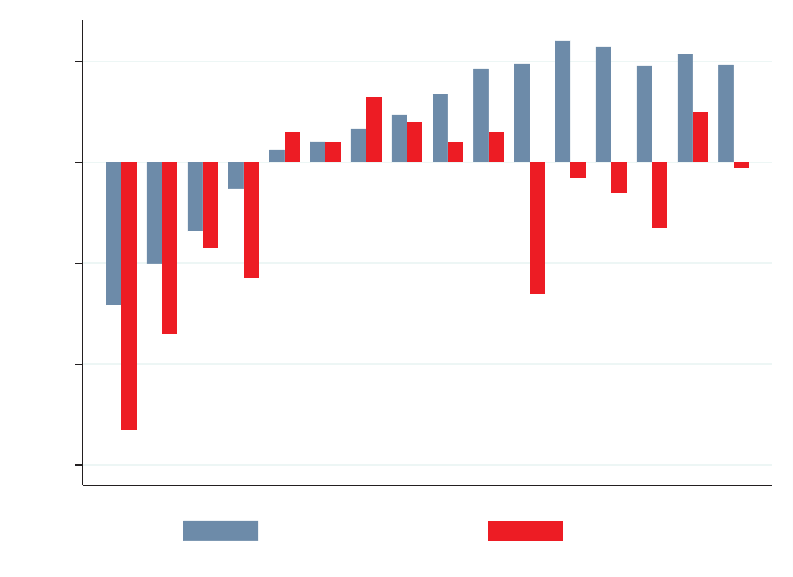
Figure 1: Greek GDP growth and CIPS GDP growth
Greek GDP growth (consta nt prices, seasonally adjusted) vs. weighted-average GDP growth
of CIPS (Cyprus, Italy, Portugal, Spain). Source: IMF.
-6
-4
-2
0
2
Percent
2013q1 2013q2 2013q3 2013q4 2014q1 2014q2 2014q3 2014q4 2015q1 2015q2 2015q3 2015q4 2016q1 2016q2 2016q3 2016q4
Weighted Avg. CIPS Greece
37
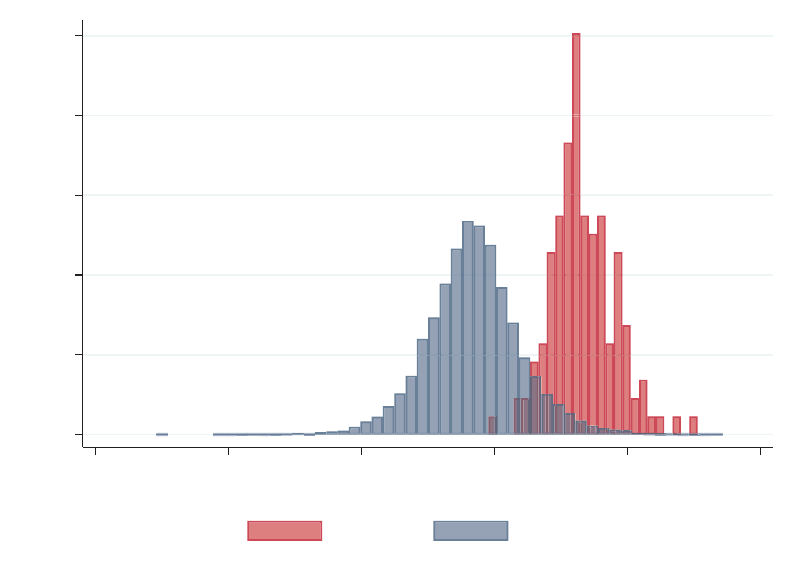
Figure 2: Sample distribution of log(Assets) vs. all Gr eek firms
This figure reports the distribution of log(Assets) for the 150 samp l e firms (red) and all
23,835 Greek firms in the 2014 Amadeus d at a (blue).
0
.1
.2
.3
.4
.5
Density
0 5 10 15 20 25
log(Assets)
Sample Amadeus
38
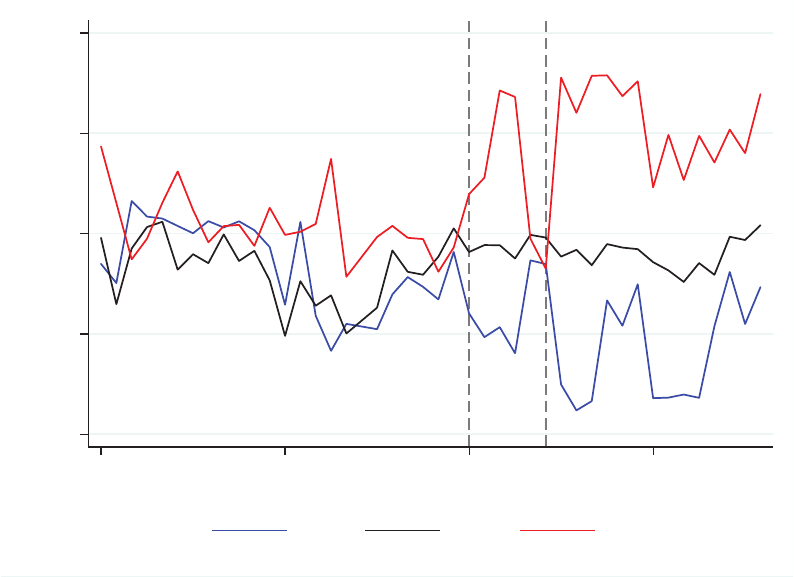
Figure 3: Time series of actual rates by initial breakeven rate
Corporate borrowers are divided into terciles according to each borrower’s i n i t i ally repo rt ed
breakeven rate in 2015. Each series plots the average a ct u al rate of the corresponding gr o u p
in the month. The first vertical, dashed gray li n e denotes the beginning of 2015 , and the
second vertical, dash ed gray line denotes the introduction of capital controls in June 2015.
2
4
6
8
10
Average Interest Rate (%)
2013m1 2014m1 2015m1 2016m1
Date
Low Med High
39
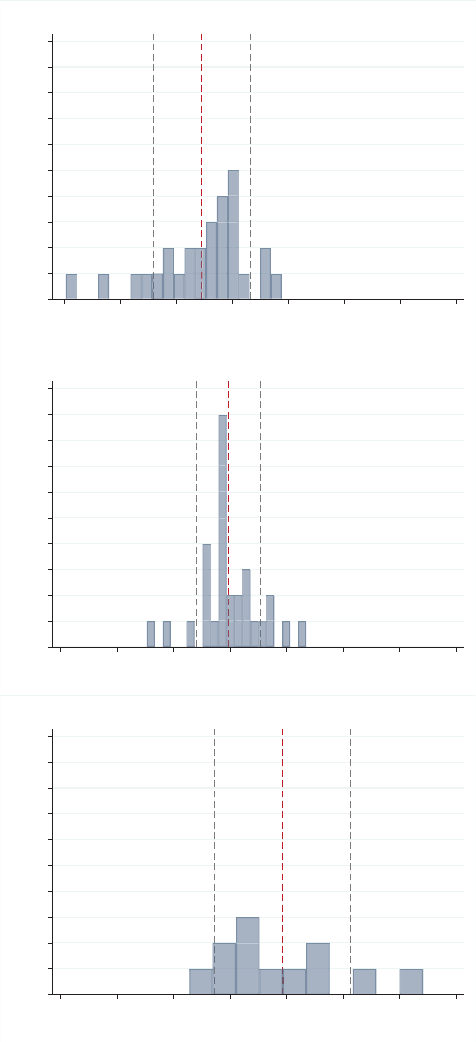
Figure 4: Actual rate changes by initial breakeven rate
These figures repo r t the distribution of actual rate changes by initial breakeven r a te. The
sample is divided into three terciles, according to the initially reported breakeven rate of
each corporate borrower in 2015 . Each plot shows a histogram of the changes to a borrower’s
actual rat es from 2014 to 2015 for the correspondi n g tercile of initial breakeven rate. The
red, vertical dashed lines represent the mean of each distribution , and the vertical, gray
dashed lines denot e the one-standard-deviation range around the mean.
0
1
2
3
4
5
6
7
8
9
10
Frequency
-6 -4 -2 0 2 4 6 8
Change in actual rate
Low
0
1
2
3
4
5
6
7
8
9
10
Frequency
-6 -4 -2 0 2 4 6 8
Change in actual rate
Med
0
1
2
3
4
5
6
7
8
9
10
Frequency
-6 -4 -2 0 2 4 6 8
Change in actual rate
High
40
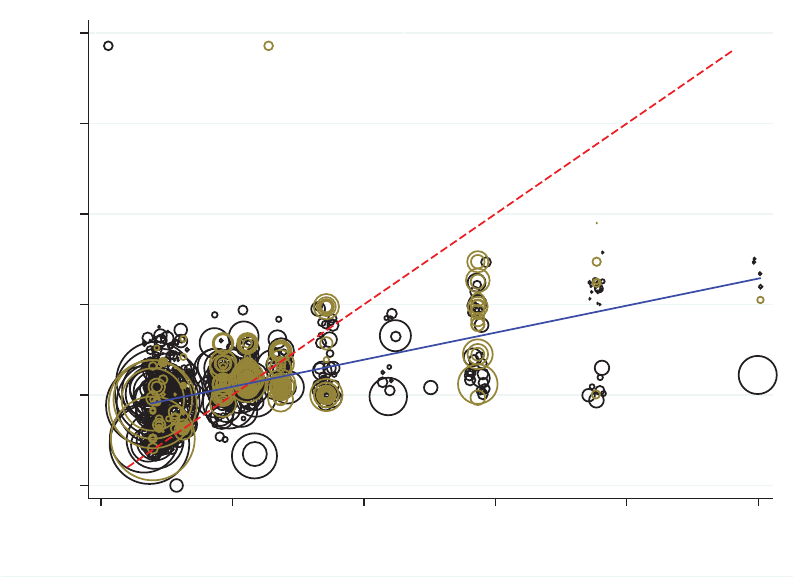
Figure 5: Actual rate and breakeven rate
This figure presents the scatter plot of actual and breakeven interest rates for n ew loans
from 2015 to June 2017. The red dashed line corr esponds to the 45
◦
line. The blue solid
line notes the OLS fitted line. Th e size of the circle corresponds to the relati ve size of the
account. Black circles correspond to term loans an d brown circles correspond to credit lines.
0
5
10
15
20
25
Actual Rate
0 5 10 15 20 25
Breakeven Rate
Term Loans Credit Lines
41
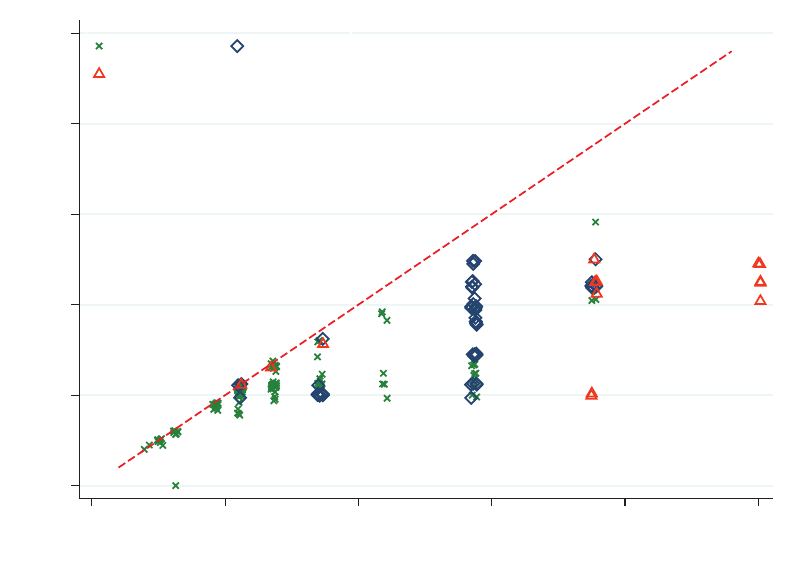
Figure 6: Reasons provided for below-breakeven-rate loans
Actual and breakeven rat es of below-breakeven-rate loans, grouped by the cited discount
reason. The red dashed line correspo n d s to the 45
◦
line.
0 5 10 15 20 25
Actual Rate
0 5 10 15 20 25
Breakeven Rate
Reason 1 Reason 2
Reason 3
42
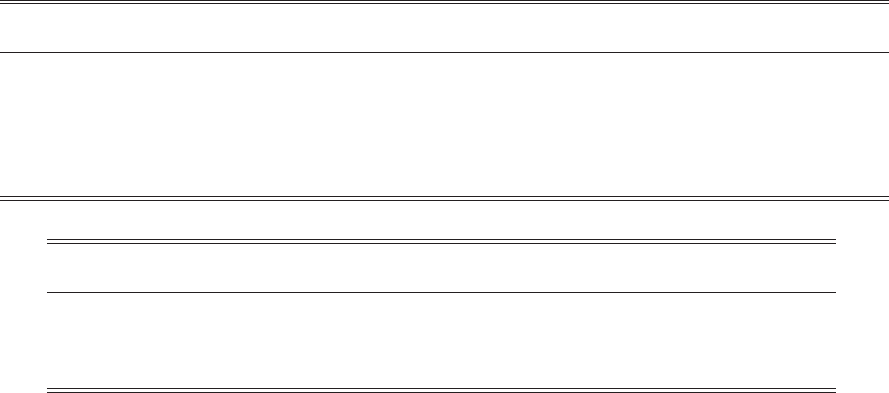
Table 1: Summary sta ti s tics
This table reports the summary statistics. Panel A reports the loan-level variables for th e
1625 loans opened from 2015 and until the end of our sample per i od (2017m6) described in
section 3.4, and Panel B reports the summary statistics for borrower-lev
el variab l es for the
150 bo r r owers in our main sampl e. Detailed variable definitions are provided in Table A1 in
the appendix.
Panel A: Loan-level variables
Count Mean St. Dev P5 P25 P 50 P75 P95
Actual Rate (%) 1625 5.38 1.71 2.47 4.65 5.48 6.10 7.85
Breakeven Rate (%) 1625 4.76 3.34 1.97 2.36 4.64 5.57 10.98
Dif (%) 1625 0.62 2.73 -3.57 -0.02 0.49 2.28 4.46
Loan Amount (million e) 1625 3.62 14.35 0.04 0.20 0. 90 2.50 10.04
Maturity (years) 1581 0.62 1.51 0.08 0.17 0.25 0.50 1.99
Collateralized (%) 1625 85.17 35.55 0.00 100.00 100.00 100.00 100.00
Panel B: Borrower-level variables
Mean St. Dev P5 P25 P50 P75 P95
OROA (%) 4.59 5.97 -5.14 1.16 4.65 7.41 15.40
Deposits (million e) 18.88 81.72 0.38 1.48 4. 18 9.18 58.11
Total Asset s (million e) 237.88 655.06 15.86 43.02 78.35 175.72 832.10
Liabilities/Assets (%) 50.87 22.59 13.59 34.13 49.82 64.64 92.07
43
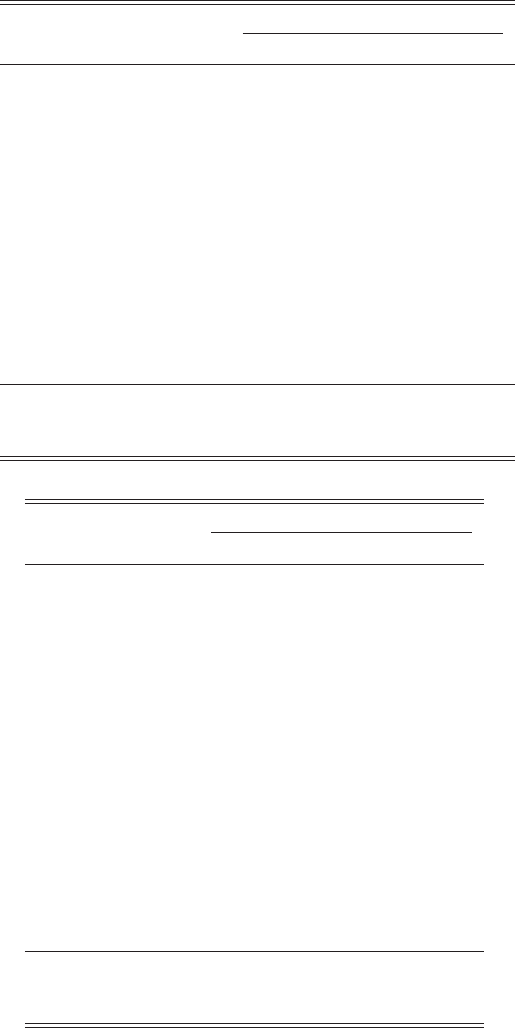
Table 2: Introduct io n of the new pricing guidelines and actual rate changes
This table reports the estimates of equation (18) in Panel A and equation (19) in Panel B.
The dependent variable in Panel A is the change i n the bo r r ower’s average interest rate from
2014 to 2015. The dependent variable in Panel B is the difference between the borrower’s
average 2015 breakeven rate and their average 2014 interest rate. Deposits and Assets are
in natural logarithms. In Panel A, OROA, Deposit s, Assets, and Liabilities/Assets are in
first differences. Robust standard error s a re reported in pa r entheses. *, **, and *** in d i cat e
significance at the 10%, 5%, and 1% l evel, respectively.
Panel A: First difference
AR
2015
- AR
2014
(1) (2) (3)
Breakeve n
2015
- AR
2014
0.403
∗∗∗
0.397
∗∗∗
0.409
∗∗∗
(0.053) (0.055) (0.060)
∆ OROA
2015
-0.055 -0.048
(0.035) (0.040)
∆ Deposits
2015
0.287
∗
0.263
(0.166) (0.173)
∆ Assets
2015
-0.344 -0.676
(0.990) (1.094)
∆ Liabilities/Assets
2015
-0.006 -0.003
(0.008) (0.009)
Observations 70 65 63
R
2
0.627 0.665 0.696
Industry FE No No Yes
Panel B: Levels
Actual Rate
2015
(1) (2) (3)
Breakeven
2015
0.379
∗∗∗
0.372
∗∗∗
0.377
∗∗∗
(0.033) (0.039) (0.042)
Actual Rate
2014
0.051 0.089 0.108
(0.152) (0.158) (0.171)
OROA -0.007 -0.005
(0.023) (0.022)
Deposits 0.023 -0.000
(0.086) (0.088)
Assets 0.127 0.137
(0.154) (0.174)
Liabilities/Assets 0.008 0.007
(0.006) (0.007)
Observations 70 67 65
R
2
0.725 0.744 0.763
Industry FE No No Yes
44

Table 3: Lasso reg res s ions with board-characteristic variables
This table reports the OLS r egressi on and post-lasso regression using board-characteristic variables, sepa-
rately for the pre-guideline period (Pre-BE) and post-guideline period (Post-BE). The dependent variable
is the actual interest rate of each loan (in all columns). All variables are standardized to have zero mean
and a standard deviation of one. For each sample peri od, the fi rs t column reports the OLS r esul t s with the
full set of board-characteristic variables. To obtain the post-lasso results in the latter column, we first run
a lasso regression with all covariates after partialling out quarter fixed effects. The tuning parameter λ is
chosen , where the mean-squared prediction error (MSPE ) i s hi ghest but still within one standard error of the
minimum MSPE (i.e., the “one standard error rule”) using 10-fold cross-validation. Finally, we run an OLS
regression using the covariates selected by the lasso. Deposits and Assets are in logs. Board -characteristic
variables are defined in the Appendix, Table A1. Standard errors are clustered by borrower, and reported
i
n parentheses. *, **, and *** indicate significance at the 10%, 5%, and 1% level, respectively.
Pre-BE Post-BE
(1) (2) (3) (4)
OLS post-lasso OLS post-lasso
Breakeven Rate 0.025 -0.004 0.617
∗∗∗
0.663
∗∗∗
(0.090) (0.107) (0.087) (0.066)
OROA 0.016 -0.050
(0.094) (0.058)
Deposits -0.015 -0.087
(0.134) (0.088)
Assets -0.059 -0.120 0.073
(0.165) (0.123) (0.117)
Liabilities/Assets 0.017 0.009 0.002
(0.082) (0.083) (0.069)
Maturity -0.031 -0.000
(0.030) (0.024)
Collateral 0.054 0.090 0.021
(0.068) (0.060) (0.042)
founder on board -0.290
∗∗
-0.168
∗∗∗
-0.011
(
0.114) (0.063) (0.070)
founder is CEO 0.146 0.037
(0.103) (0.087)
founder’s family on board -0.013 0.130
∗
(0.101) (0.070)
f
amily equity ownership 0.124 0.065 -0.118
(0.102) (0.063) (0.079)
bank executive on board 0.475
∗∗∗
0.476
∗∗∗
0.039
(
0.149) (0.139) (0.059)
media executive on board 0.237
∗∗∗
0.212
∗∗∗
0.095
∗∗∗
(0.041) (0.025) (0.022)
p
olitician on board -0.398
∗∗∗
-0.397
∗∗∗
-0.043
(0.124) (0.127) (0.075)
politician family on board 0.209
∗∗
0.199
∗∗
0.045
(0.082) (0.079) (0.042)
bank executive senior manager -0.392
∗∗
-0.367
∗∗∗
-0.016
(
0.173) (0.132) (0.063)
Observations 1012 1012 1194 1194
R
2
0.312 0.306 0.488 0.463
Q
uarter FE Yes Yes Yes Yes
45

Table 4: Actual rate and breakeven rate
This table reports the ba sel i n e estimates of equation (20), where columns (1)-(5) incremen-
tally add covariates. Column (6) report s the results from augmenting equation (20 ) with
firm-fixed effects. The dependent variable is the actual interest rate of each loan (in all
columns). Deposits and Assets are in natur al logarithms. Standard errors, whi ch are clus-
tered by borrower, are reported in parent h eses. *, **, and *** i n d i ca t e significance at the
10%, 5%, and 1% level, respectively.
(1) (2) (3) (4) (5) (6)
Breakeven Rate 0.299
∗∗∗
0.310
∗∗∗
0.285
∗∗∗
0.293
∗∗∗
0.282
∗∗∗
0.095
(0.033) (0.031) (0.035) (0.039) (0.038) (0.097)
OROA -0.016 -0.017 -0.026
∗
(0.019) (0.019) (0.016)
Deposits -0.076 -0.050 -0.151
∗∗
(0.088) (0.090) (0.062)
Assets 0.082 0.048 0.224
∗∗
(0.132) (0.132) (0.096)
Liabilities/Assets 0.004 0.003 0.001
(0.006) (0.006) (0.006)
Maturity -0.072 -0.007 -0.004
(0.065) (0.044) (0.042)
Collateral 0.262 0.034 -0.249
(0.193) (0.163) (0.271)
Observations 1625 1625 1571 1529 1486 1549
R
2
0.339 0.389 0.390 0.395 0. 442 0.601
Quarter FE No Yes Yes Yes Yes Yes
Industry FE No No No No Yes No
Firm FE No No No No No Yes
46

Table 5: Lagged interest rates
This table augments equation (20) with a lagged actual rate. Specifically, Actual Rate
t−1
is
calculated as th e average interest rate of the borr ower’s loan s in the most recent previous
month. Columns (1)-(5) incrementally add the covar i a tes of the specification, and column
(6) includ es firm fixed effect s. Deposits and Assets are in n at u r a l logarithms. Standard
errors, which a re clustered by borrower, are reported in parentheses. *, **, and *** indicate
significance of 10%, 5%, and 1% level, respectively.
(1) (2) (3) (4) (5) (6)
Breakeven Rate 0.186
∗∗∗
0.199
∗∗∗
0.184
∗∗∗
0.193
∗∗∗
0.198
∗∗∗
0.079
(0.042) (0.042) (0.042) (0.045) (0.039) (0.108)
Actual Rate
t−1
0.567
∗∗∗
0.556
∗∗∗
0.580
∗∗∗
0.583
∗∗∗
0.537
∗∗∗
0.523
∗∗∗
(0.093) (0.091) (0.072) (0.074) (0.060) (0.105)
OROA -0.012 -0.011 -0.014
(0.015) (0.016) (0.013)
Deposits 0.053 0.070 -0.021
(0.078) (0.077) (0.066)
Assets 0.063 0.049 0.232
∗∗
(0.098) (0.096) (0.094)
Liabilities/Assets 0.002 0.002 0.001
(0.005) (0.005) (0.005)
Maturity -0.011 -0.013 -0.009
(0.059) (0.057) (0.075)
Collateral 0.169 -0.013 -0.247
(0.158) (0.162) (0.287)
Observations 1423 1423 1389 1364 1331 1376
R
2
0.447 0.488 0.490 0.498 0. 527 0.614
Quarter FE No Yes Yes Yes Yes Yes
Industry FE No No No No Yes No
Firm FE No No No No No Yes
47
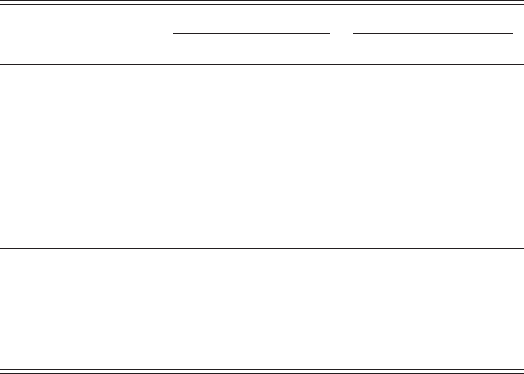
Table 6: Asymmetric pa s s -thro ugh
The dependent variable is the actual rate of each loan in all columns. Columns (1)-(2)
only includ e borrowers whose first reported brea keven rate in 2015 is below the median
breakeven rate of initial breakeven rates. Columns (3)-(4) only include the borrowers who se
first reported 2015 breakeven rate is above the median of initial breakeven rates. S t a n d ar d
errors, which a re clustered by borrower, are reported in parentheses. *, **, and *** indicate
significance at the 10%, 5%, and 1% l evel, respectively.
Below-med ian BE Above-median BE
(1) (2) (3) (4)
Breakeven Rate 0.434
∗∗
0.432
∗∗
0.041 0.044
(0.190) (0.180) (0.093) (0.092)
Maturity 0.082
∗∗
-0.083
(0.039) (0.079)
Collateral -0.260 0.043
(0.232) (0.231)
Observations 544 532 883 863
R
2
0.480 0.496 0.411 0.432
Quarter FE Yes Yes Yes Yes
Industry FE No No No No
Firm FE Yes Yes Yes Yes
48
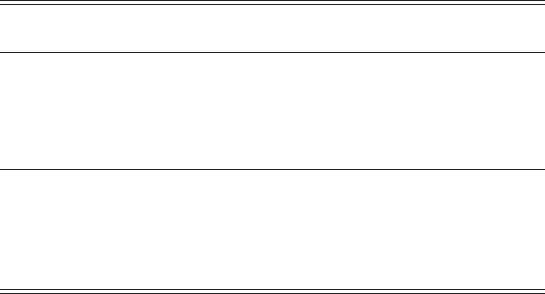
Table 7: Future borrower credit rating
This tab l e reports the results from estimating equation (21). The dependent variable in all
columns is a borrower’s rating 12 month s lat er . Diff
it
for a borrower i in month t is calculated
as the average acr oss all of the borrower’s loans’ actual - breakeven rate in t. Column (1)
shows the result for a l l observations. Co l u m n (2) only includes observations with negative
Diff
it
, and colu m n (3) only includes ob ser vations with positive Diff
it
. A lower value of the
v
ariable ”Rating” corresponds to better credit quality. Standard errors are clustered by
borrower, and reported in parentheses. *, **, and *** i n d i ca t e significance at the 10%, 5%,
and 1% level, respectively.
(1) (2) (3)
All Customers Negative Dif Positive Dif
Dif -0.084 -0.070 0.006
(0.068) (0.134) (0.135)
Rating 0.704
∗∗∗
0.705
∗∗∗
0.690
∗∗∗
(0.092) (0.201) (0.094)
Observations 465 123 342
R
2
0.519 0.631 0.396
Quarter FE Yes Yes Yes
Industry FE Yes Yes Yes
Firm FE No No No
49

Table 8: Regulatory cos ts and actual rate
This table reports the resu l t s from augmenting the baseline equation (20) with regulatory
capital costs. Columns (1)-(2) include al l accounts, and column (3) incl u d es term loans
only. Column (4) only includes new credit term loans, which are defined as an a ccou nt that
increases the borrower’s t o ta l outsta n d i n g balan ce by at least 10%. The dependent variable
is a loan’s interest rate in all columns. Deposits and Assets are in natu ra l logarithms.
Standard errors are clustered by borrower, and reported in parentheses. *, **, an d ***
indicate significance at t h e 10%, 5%, and 1% l evel, respectively.
(1) (2) (3) (4)
Term Loans New Credit Term Loans
Breakeve n Rate 0.248
∗∗∗
0.277
∗∗∗
0.244
∗∗
0.268
∗∗∗
(0.083) (0.080) (0.098) (0.092)
Regulatory Capital Cost 0.124 0.042 0.112 -0.007
(0.732) (0.643) (0.910) (0.887)
OROA -0.027 -0.026 -0.033
∗
-0.018
(0.018) (0.016) (0.017) (0.027)
Deposits -0.157
∗∗
-0.151
∗∗
-0.181
∗∗
-0.100
(0.064) (0.061) (0.079) (0.144)
Assets 0.229
∗∗
0.225
∗∗
0.268
∗∗
0.217
(0.104) (0.098) (0.126) (0.172)
Liabilities/Assets 0.003 0.001 0.001 0.005
(0.006) (0.006) (0.007) (0.008)
Maturity 0.023 -0.007 0.043 0.047
(0.040) (0.044) (0.040) (0.065)
Collateral 0.075 0.037 -0.070 -0.108
(0.174) (0.158) (0.223) (0.335)
Observations 1486 1486 1054 296
R
2
0.397 0.442 0.389 0.438
Quarter FE No Yes No No
Industry FE Yes Yes Yes Yes
Firm FE No No No No
50

A Appendix
A.1 Proofs
Proof of Proposition 2. S
etting V
H,c
=
D
C
inside (9) and solving for R
H,c
leads to (13). To
prove R
L,c
= π
L
, we arg u e by contradiction. Indeed, suppose (counterfactually) R
L,c
< π
L
.
In that case, it must be that both in the L and the H regime the constraints V
H,c
≤
D
C
and V
L,c
≤
D
C
are both binding (because the bank is only constrained by the no-poaching
condition in ei th er regime). Accordingly, (10) implies
R
L,c
= (r + ρ)
D
C
− ρC
∗
. (23)
However, (7) implies
π
L
< r
∗
− p
H
(1 − C
∗
) . (
24)
But condition ( 11) together with (23) and (24) imply
π
L
< r
∗
− p
H
(1 − C
∗
) <
r
D
C
+ ρ
D
C
− C
∗
= R
L,c
.
This contradicts the assumption that R
L,c
< π
L
. T
herefore, it must be that R
L,c
= π
L
.
Using R
L,c
= π
L
inside (10) and using V
H,c
=
D
C
leads to (14). Assumption (12) implies
liquidation of the fir m in the low regime i s not optimal.
Proof of Proposition 3. Proposition 2 implies
R
L,c
− R
H,c
ρ (1 − C
∗
)
=
π
L
− R
H,c
ρ (1 − C
∗
)
=
π
L
−
!
r +
(r + ρ)
!
D
C
− 1
+ p
L
!
D
C
− V
L,c
ρ (1 − C
∗
)
. (25)
Conditions (11) and (2 4) imply
π
L
< r
D
C
+ ρ
D
C
− C
∗
. (26)
51

Combini n g (25) with (26) leads to
R
L,c
− R
H,c
ρ (1 − C
∗
)
<
r
D
C
+ ρ
!
D
C
− C
∗
−
!
r + (r + ρ)
!
D
C
− 1
+ p
L
!
D
C
− V
L,c
ρ (1 − C
∗
)
=
ρ (1 − C
∗
) − p
L
!
D
C
− V
L,c
ρ (1 − C
∗
)
= 1 − p
L
!
D
C
− V
L,c
ρ (1 − C
∗
)
≤ 1,
where the last line follows from the no-poaching conditio n V
L,c
≤
D
C
.
52

A.2 Additional figures and tabl es
Figure A1: New accounts by type
This figur e reports the number of new accounts by type – namel y, term l o an or credit lin e –
for each month in the sam p l e period. The dark-blue bars correspond to the number of new
term loans in the month, and the light-brown b a rs represent the number of new credit-line
accounts.
0
20
40
60
80
2015m1
2015m2
2015m3
2015m4
2015m5
2015m6
2015m7
2015m8
2015m9
2015m10
2015m11
2015m12
2016m1
2016m2
2016m3
2016m4
2016m5
2016m6
2016m7
2016m8
2016m9
2016m10
2016m11
2016m12
2017m1
2017m2
2017m3
2017m4
2017m5
2017m6
Term Loans Credit Lines
53
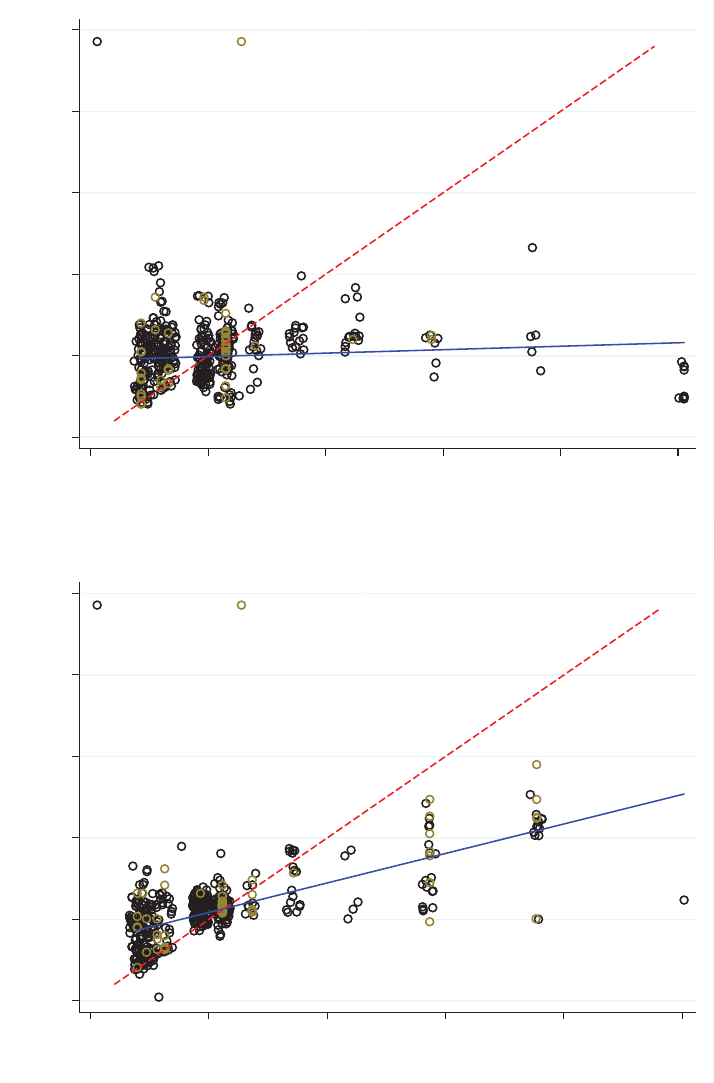
Figure A2: Actual rates and breakeven rates in 2014 and 2015
This figure shows the scatter plot of actual and breakeven rates for 2014 and 2015. The red dashed line
corresponds to the 45
◦
line. The blue solid line notes the OLS fitted line. Black circles correspond to term
loans and brown circles correspond to credit lines.
Panel A: 2014
0
5
10
15
20
25
Actual Rate
0 5 10 15 20 25
Breakeven Rate
Term Loans Credit Lines
Panel B: 2015
0
5
10
15
20
25
Actual Rate
0 5 10 15 20 25
Breakeven Rate
Term Loans Credit Lines
54
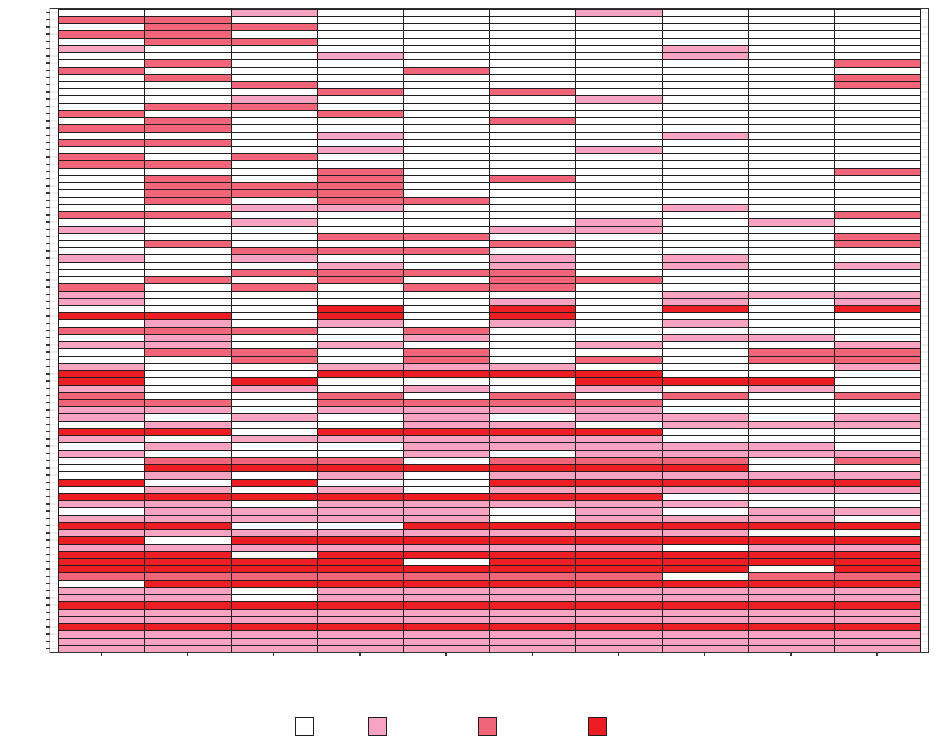
Figure A3: Borrower composition
This figure shows borrower composition over the sample period. Th e figure includes 89
borrowers who receive a l o an in 2015 and furthermore appear in the sam p l e in at least two
separate quarters. For each borrower, fi l l ed boxes represent the quarters in whi ch they open
a new loan with the bank. Each borrower is color coded such that dark r ed correspond s
to borrowers who receive an upward breakeven-rate ad ju st ment, li ght pink corresponds to
borrowers who receive a downward breakeven-rate adjustment, and medium red corresponds
to those who do not receive any adjustment.
01
02
03
04
05
06
07
08
09
10
11
12
13
14
15
16
17
18
19
20
21
22
23
24
25
26
27
28
29
30
31
32
33
34
35
36
37
38
39
40
41
42
43
44
45
46
47
48
49
50
51
52
53
54
55
56
57
58
59
60
61
62
63
64
65
66
67
68
69
70
71
72
73
74
75
76
77
78
79
80
81
82
83
84
85
86
87
88
89
2015q1 2015q2 2015q3 2015q4 2016q1 2016q2 2016q3 2016q4 2017q1 2017q2
Date
customerid
No loan BE change < 0 BE change = 0 BE change > 0
55
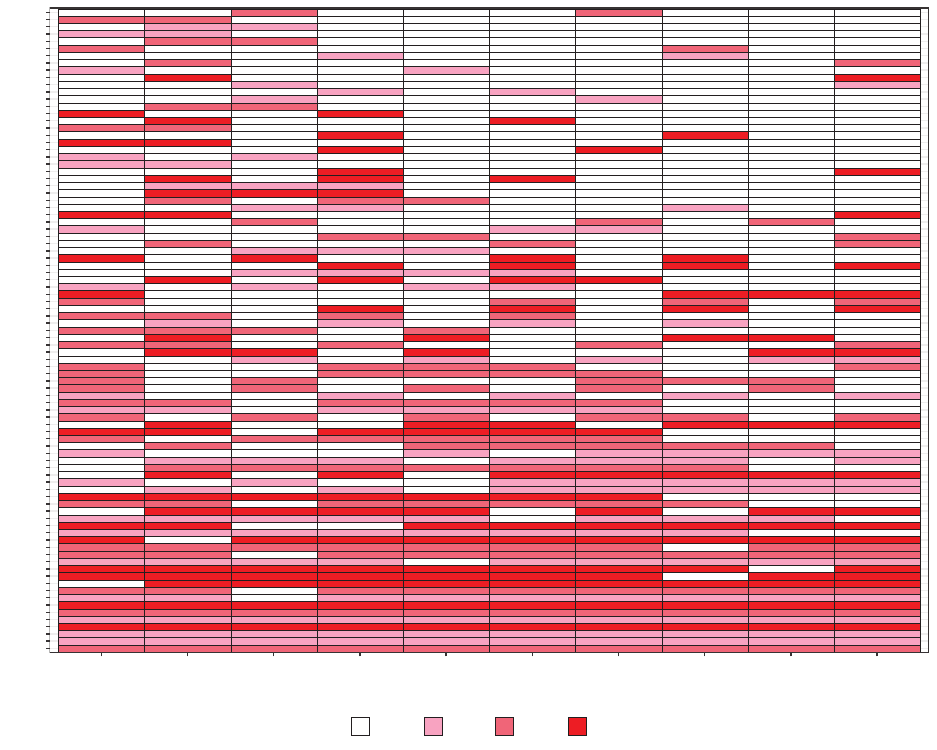
Figure A4: [Continued] Borrower composition
This figure shows borrower composition over the sample period. Th e figure includes 89
borrowers who receive a lo an in 2015 and fu r t her m or e appear in the sample i n at least
two separate quarters. For each b o r r ower, filled boxes represent the quarters in which they
open a new loan with the bank. The sample borrowers are divided into th r ee tercile groups
according to their ini t i al Diff, namely, the differ en ce between the actual interest rate and
breakeven rate. Each borrower is color coded such that dark red corresponds to borrowers
in the top tercile, mediu m red correspon d s to the middle tercile, and light pink corresponds
to the bott o m tercile.
01
02
03
04
05
06
07
08
09
10
11
12
13
14
15
16
17
18
19
20
21
22
23
24
25
26
27
28
29
30
31
32
33
34
35
36
37
38
39
40
41
42
43
44
45
46
47
48
49
50
51
52
53
54
55
56
57
58
59
60
61
62
63
64
65
66
67
68
69
70
71
72
73
74
75
76
77
78
79
80
81
82
83
84
85
86
87
88
89
2015q1 2015q2 2015q3 2015q4 2016q1 2016q2 2016q3 2016q4 2017q1 2017q2
Date
customerid
No loan Low Dif Med Dif High Dif
56

Table A1: Variable definitions
Variable Definition
Borrower-level Variables
OROA Defined as EBIT/(Total Assets)
Deposits Reported in euros
Assets Reported in euros
Liabilities/Assets Defined as (Current Liabilities)/(Total Assets)
Industry
Rating The bank’s credit rating of the borrower; lower rating corresponds to
higher credit quality.
Loan-level Variab l es
Actual Rate Interest rate of t h e loan.
Breakeven Rate The breakeven interest rate for the loan as computed by the bank’s
own pricing department.
Diff Defined as actual rate − breakeven rate.
Loan Amount Reported in euros.
Maturity Maturity of the l oan in years at issuance.
Collateralization An indicator variable that takes a value 1 if the loan belongs to a
borrower who has provided collateral in that month
Board-Characteristic Variables
founder on board The founder is on the board
founder is CEO The founder is the CEO
founder’s family on board Th e founder’s family memb er is on the board
family equity ownership The founder family’s ownership of outstanding equity
bank executive on boar d Number of board members who are or were bank executives
media executive on board Number of board member s who are or wer e media executives
politician on board Number of board members who have or had political affiliations
politician family on board Number of board member s who have family members with pol i t i cal
affiliations
bank executive senior man ager Has a senior manager who was a bank executive
57

Table A2: Summary sta ti s ti cs by breakeven rate - actual rate difference
This table reports the summar y statistics for loan-level variables and borrower-level variables
in our main samp l e. Detailed variable definitions are provided in Table A1. Panel A reports
t
he summary statist i cs only for loans with a rate higher t h a n their breakeven rate. Panel
B reports the results only for below-breakeven loans. S i m i l ar l y, Panel C only includes the
borrowers who never receive a below-breakeven loan from 2015 and until the en d of our
sample period (2017m6), and Panel D only includes the borrowers who receive at least one
below-breakeven loan.
Panel A: Above-breakeven loans
Count Mean St. Dev P5 P25 P50 P75 P95
Actual Rate (%) 1211 5.22 1.52 2.36 4.59 5.55 6.10 7.60
Breakeven Rate (%) 1211 3.56 1.52 1.97 2.21 2.81 4.64 5. 57
Dif (%) 1211 1.66 1.52 0.10 0.35 1.21 2.63 4.63
Loan Amount (million e) 1211 3.86 16.07 0.04 0.20 0.86 2.33 10.09
Maturity (years) 1181 0.58 1.49 0.08 0.13 0.25 0.50 2.01
Collateralized (%) 1211 83.90 36.77 0.00 100.00 100.00 100.00 100.00
Panel B: Below-breakeven loans
Count Mean St. Dev P5 P25 P 50 P75 P95
Actual Rate (%) 414 5.87 2.11 2.90 5.01 5.41 6.17 11.02
Breakeven Rate (%) 414 8.27 4.54 3.13 5.57 6.83 8.57 18.85
Dif (%) 414 -2.40 3.20 -8.73 -3.57 -1.34 -0.23 -0.06
Loan Amount (million e) 414 2.93 7.19 0.03 0.20 1.00 2.87 10.01
Maturity (years) 400 0.76 1.54 0.08 0.23 0.41 0.75 1.88
Collateralized (%) 414 88.89 31.46 0.00 100.00 100.00 100.00 100.00
Panel C: Above-breakeven borrowers
Mean St. Dev P5 P25 P50 P75 P95
OROA (%) 6.85 5.87 -0.17 3.01 5.79 9.58 17.04
Deposits (million e) 24.94 118.53 0.51 1.36 3.82 7.10 28.22
Total Asset s (million e) 263.56 939.87 13.47 33.88 65.75 106.65 531.45
Liabilities/Assets (%) 50.33 21.17 14.74 32.35 50.83 62.27 84.80
Panel D: Below-breakeven borrowers
Mean St. Dev P5 P25 P50 P75 P95
OROA (%) 2.88 5.48 -6.72 -0.79 3.12 6.17 11.85
Deposits (million e) 14.31 34.11 0.21 1.48 4.43 10.20 69.04
Total Asset s (million e) 218.37 300.20 21.95 55.62 116.65 278.67 865.85
Liabilities/Assets (%) 51.27 23.74 9.85 35.27 49.74 65.94 92.63
58

Table A3: Summary st a ti s tics for account-level variables, term loans
This table reports the summary statisti cs for the account-level variables in Table 1, but only
for term loans.
Panel A: All accounts
Count Mean St. Dev P5 P25 P 50 P75 P95
Actual Rate (%) 1163 5.21 1.76 2.36 4.45 5.25 6.10 7.85
Breakeven Rate (%) 1163 4.36 3.41 1.97 2.21 3.13 5.57 10.98
Dif (%) 1163 0.85 2.82 -3.57 0.12 0.72 2.53 4.63
Loan Amount (million e) 1163 4.59 16.68 0.05 0.30 1.00 3.01 16.83
Maturity (years) 1143 0.71 1.76 0.08 0.09 0.25 0.50 3.01
Collateralized (%) 1163 83.40 37.22 0.00 100.00 100.00 100.00 100.00
Panel B: Above-breakeven accounts
Count Mean St. Dev P5 P25 P50 P75 P95
Actual Rate (%) 932 5.05 1.53 2.35 4.10 5.20 6.06 7.60
Breakeven Rate (%) 932 3.30 1.39 1.97 2.21 2.57 4.64 5.57
Dif (%) 932 1.75 1.53 0.08 0.43 1.32 2.79 4.63
Loan Amount (million e) 932 4.63 18.05 0.05 0.30 1.00 2.90 16.49
Maturity (years) 917 0.66 1.68 0.08 0.09 0.25 0.50 3.00
Collateralized (%) 932 82.73 37.82 0.00 100.00 100.00 100.00 100.00
Panel C: Below-breakeven accounts
Count Mean St. Dev P5 P25 P50 P75 P95
Actual Rate (%) 231 5.87 2.37 2.38 4.84 5.47 6.58 11.02
Breakeven Rate (%) 231 8.67 5.26 2.57 5.57 6.83 10.98 18. 85
Dif (%) 231 -2.81 3.73 -12.35 -4.07 -1.07 -0.23 -0.03
Loan Amount (million e) 231 4.44 9.28 0.04 0.50 2.00 3.65 24.18
Maturity (years) 226 0.90 2.02 0.08 0.22 0.26 0.50 4.58
Collateralized (%) 231 86.15 34.62 0.00 100.00 100.00 100.00 100.00
59
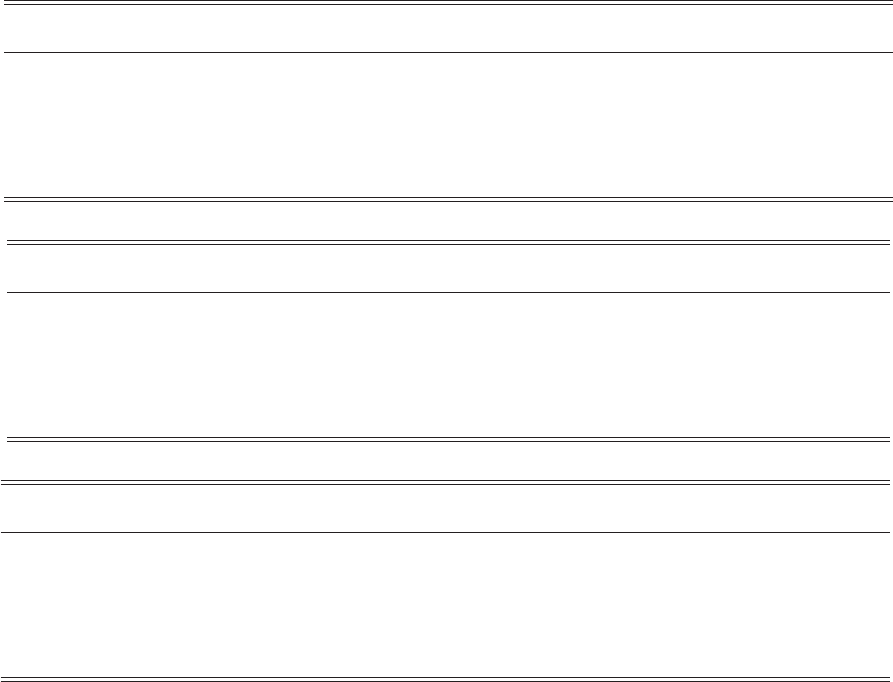
Table A4: Summary st a ti s tics for account-level variables, credit lines
This table reports the summary statisti cs for the account-level variables in Table 1, but only
for credit-line accou nts.
Panel A: All accounts
Count Mean St. Dev P5 P25 P 50 P75 P95
Actual Rate (%) 462 5.82 1.51 3.26 5.25 5.59 6.42 8.90
Breakeven Rate (%) 462 5.76 2.94 2.21 4.64 5.57 6.83 8.57
Dif (%) 462 0.06 2.40 -3.57 -1.30 0.14 1.14 4.46
Loan Amount (million e) 462 1.18 3.94 0.03 0.11 0.31 1.16 3.95
Maturity (years) 438 0.41 0.27 0.14 0.21 0.38 0.41 0.96
Collateralized (%) 462 89.61 30.55 0.00 100.00 100.00 100.00 100.00
Panel B: Above-breakeven accounts
Count Mean St. Dev P5 P25 P50 P75 P95
Actual Rate (%) 279 5.79 1.35 3.15 5.52 5.71 6.76 7.85
Breakeven Rate (%) 279 4.45 1.61 1.97 2.81 5.57 5.57 5.57
Dif (%) 279 1.34 1.44 0.12 0.14 0.94 2.28 4.46
Loan Amount (million e) 279 1.29 4.95 0.03 0.11 0.26 0.86 3.95
Maturity (years) 264 0.30 0.16 0.13 0.21 0.23 0.38 0.50
Collateralized (%) 279 87.81 32.77 0.00 100.00 100.00 100.00 100.00
Panel C: Below-breakeven accounts
Count Mean St. Dev P5 P25 P 50 P75 P95
Actual Rate (%) 183 5.87 1.72 5.00 5.25 5.40 5.51 10.25
Breakeve n Rate (%) 183 7.75 3.36 5.57 5.57 6.83 8.57 14.33
Dif (%) 183 -1.88 2.26 -6.49 -2.06 -1.43 -0.20 -0.06
Loan Amount (million e) 183 1.02 1.40 0.02 0.11 0.45 1.37 3.99
Maturity (years) 174 0.57 0.31 0.19 0.38 0.41 0.94 0.96
Collateralized (%) 183 92.35 26.65 0.00 100.00 100.00 100.00 100.00
60

Table A5: Actual rat e and breakeven rate, term loans
The following table presents the results from regressions of actual rate on breakeven rate as
in Table 4, but for term loans on l y.
(1) (2) (3) (4) (5) (6)
Breakeven Rate 0.292
∗∗∗
0.309
∗∗∗
0.289
∗∗∗
0.294
∗∗∗
0.283
∗∗∗
0.066
(0.037) (0.034) (0.043) (0. 045) (0.044) (0.067)
OROA -0.023 -0.023 -0.030
∗∗
(0.018) (0.018) (0.015)
Deposits -0.014 -0.002 -0.162
∗∗
(0.096) (0.103) (0.078)
Assets 0.038 0.017 0.234
∗
(0.139) (0.139) (0.119)
Liabilities/Assets 0.004 0.003 -0.001
(0.007) (0.006) (0.006)
Maturity -0.061 0.001 -0.018
(0.071) (0.046) (0.049)
Collateral 0.173 -0.121 -0.421
(0.226) (0.193) (0.355)
Observations 1163 1163 1114 1095 1054 1112
R
2
0.320 0.400 0.402 0.404 0. 455 0.631
Quarter FE No Yes Yes Yes Yes Yes
Industry FE No No No No Yes No
Firm FE No No No No No Yes
61

Table A6: Actual rat e and breakeven rate, credit lines
The following table presents the results from regressions of actual rate on breakeven rate as
in Table 4, but for credit line a ccounts only.
(1) (2) (3) (4) (5) (6)
Breakeve n Rate 0.298
∗∗∗
0.304
∗∗∗
0.230
∗∗∗
0.237
∗∗
0.208
∗
0.187
(0.064) (0.067) (0.049) (0.088) (0.110) (0.194)
OROA 0.047 0.068 0.066
(0.047) (0.087) (0.097)
Deposits -0.492
∗∗∗
-0.499
∗
-0.513
(0.149) (0.276) (0.330)
Assets 0.439
∗∗∗
0.467 0.414
(0.156) (0.277) (0.307)
Liabilities/Assets 0.009 0.020 0.026
(0.010) (0.016) (0.020)
Maturity -0.094 -0.044 2.495
(1.001) (1.059) (1.973)
Collateral 1.001
∗∗
0.627
∗∗
0.129
(0.341) (0.282) (0.303)
Observations 462 462 457 434 432 437
R
2
0.338 0.381 0. 440 0.482 0.489 0.569
Quarter FE No Yes Yes Yes Yes Yes
Industry FE No No No No Yes No
Firm FE No No No No No Yes
62
